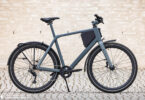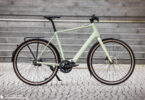Looking to get away from the clichéd take on Amsterdam with its red-light district, cafes and canals, we took to ebikes to create this edition of the DOWNTOWN Urban Getaway powered by WINORA. With the help of clued-up locals, we discover hidden gems and hard-to-find spots that go under the radar of suitcase-wheeling tourists, drunk stag dos and even many locals.
What is the DOWNTOWN Urban Getaway series?
What do urban spaces of the future look like? What can the world’s most bike-friendly cities teach us? Insider spots, hidden corners, the must-sees minus the crowds, top tips and route guides – the DOWNTOWN Urban Getaway series powered by WINORA explores urban culture, going beneath the surface of the world’s most-hyped cities on a first-name basis with locals to scout inspiration and motivation for a better tomorrow.
Along with the local lingo, each guide includes the city’s dos and don’ts, as well as the A-B-C on where to find your flat whites, tuck into sensational food, or sip a fresh beverage. As each Urban Getaway is done by bike, we also unpick the best builds for the city. Ready? Let’s go.
Enjoy the following 6 parts:
- 1/6 XXX – From a fishing village to a metropolis
- 2/6 Who needs a car… when you’ve got a bike
- 3/6 Cycling Etiquette – Rules for a revolution
- 4/6 What’s up? A sample of people you’ll meet on the bike paths
- 5/6 Getaway Essentials – Hotels, Bars, Restaurants, Dos and Don’ts in Amsterdam
- 6/6 Escape faster – Our Amsterdam-approved electric urban whips in detail
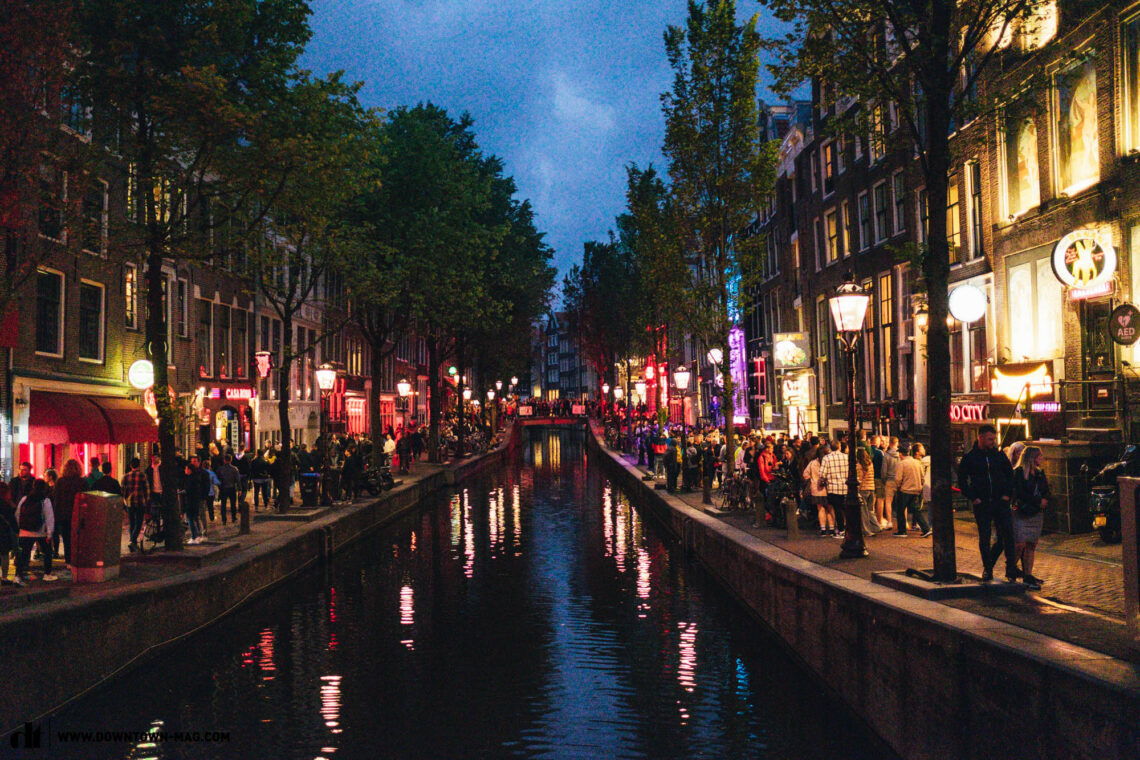
1/6 XXX – From a fishing village to a metropolis
Amsterdam doesn’t need much of an introduction. It has its canals, the notorious red-light district and open-minded drug politics, and almost as many cyclists as it has tulips. But what is it about Amsterdam that gets us all raving? We cruise to the outer fringes of the city in search of the answer, eavesdrop on a live radio broadcast and dive into the city’s gripping history.


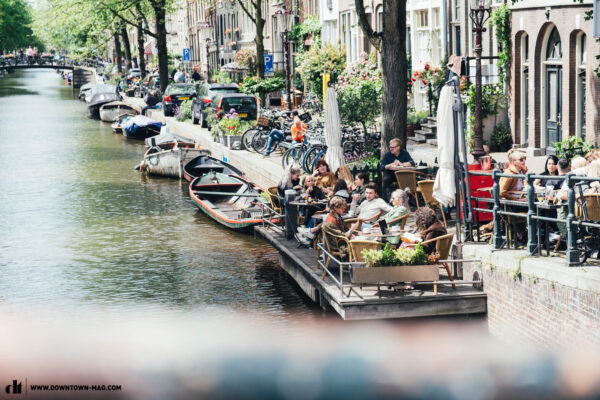
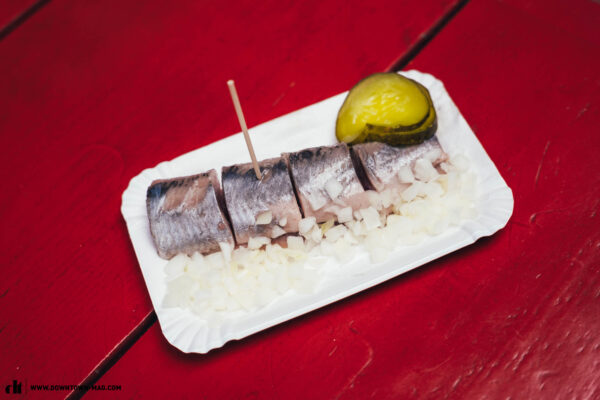
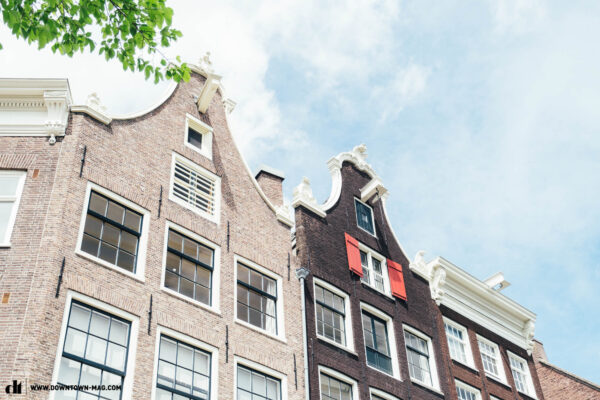
Once a small fishing village called Dam that sprang up in the 13th century to what is surely one of the world’s most famous cities, the Dutch capital has a long and rich history but a seriously short nickname: A’dam. The name stems from the original dam on the River Amstel, which flows through the city and once opened it up to trade. It didn’t take long until Amsterdam underwent a hell of a transformation, turning into a thriving, if not slightly dirty, port town, seeing fresh fish gutted on its shores, and copious amounts of salt and tropical fruit imported. Within a short time, it became the trading hub of Central Europe. Boats would arrive laden down with Japanese soap, Indonesian ingredients, and Chinese porcelain, setting the tone for the international flair that still buzzes throughout the city. The next logical step was for banks to set up shop, authors to roam the streets, and A-list artists like Rembrandt and Van Gogh to reach their peaks amongst the tall houses. Wondering if the original dam still exists? Sort of, just look for the sign in a square in the centre of town.
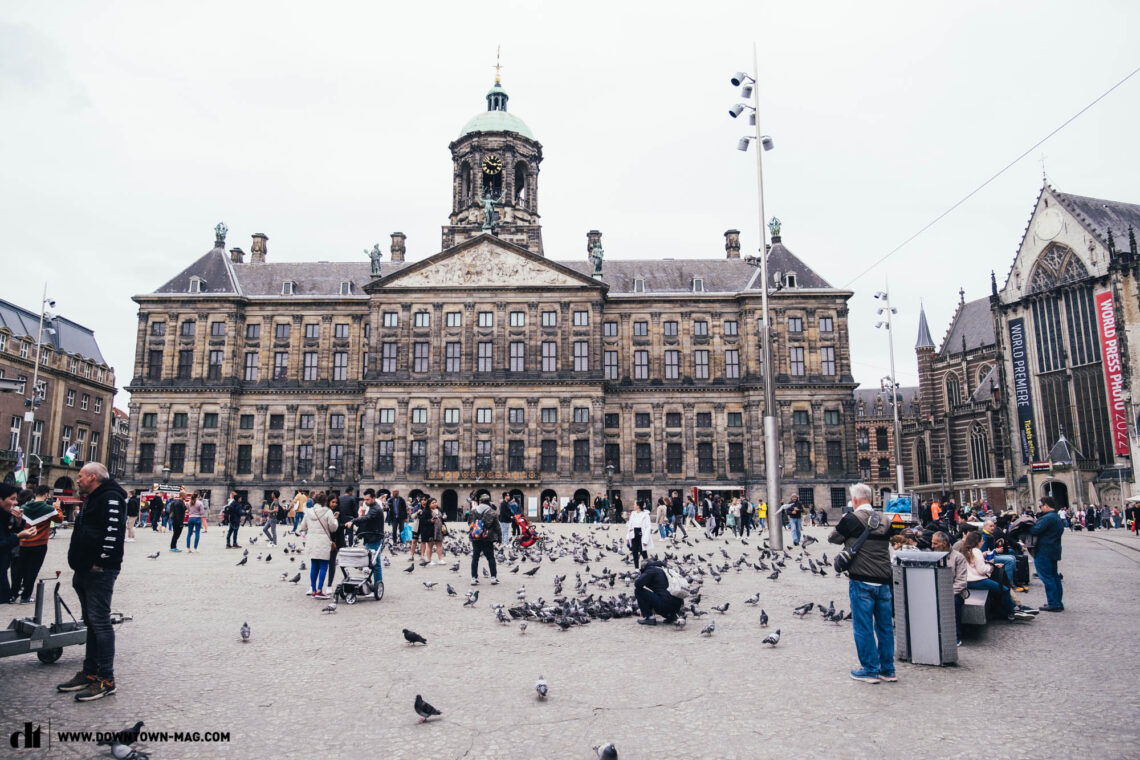
As if built on a jetty
Trying to shape a city on swamp-like, sandy soil isn’t easy, which is why Amsterdam is built on around five million wooden stilts. These days, the city’s new builds have a concrete foundation, but most of the old buildings are on rickety wooden legs. Central station, for example, stands on 8,600 wooden stilts, while the Royal Palace is on 13,659 of them. You’ll spot houses that look as though they’re starting to slump, with crooked facades that are almost diving down into the canal banks as the wood underneath them rots (don’t worry, they’re safe). The canals are a listed UNESCO World Heritage Site, by the way. Every angle of the city radiates history – and with 1,500 bridges, many Renaissance era buildings, romantic canals and centuries-old monuments, that’s a lot of history. We’re not sure how surprising it is to say that more than 8,000 buildings are listed monuments, and even certain views of towns and villages are protected by ministerial order.

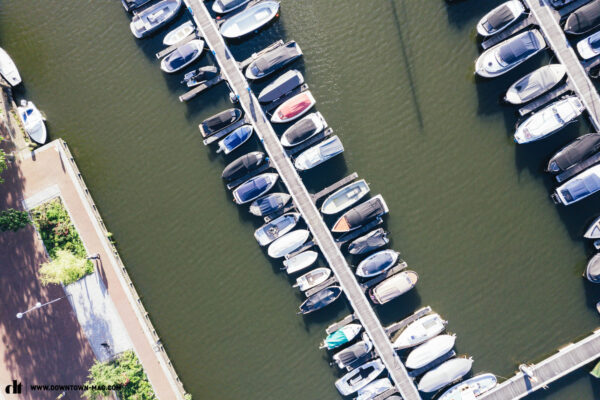
Packed in tightly
With a population of more than 17 million – around 488 people per square kilometre – the Netherlands is one of the most densely populated countries in the whole world (number one in Europe). One of the biggest small-scale towns in the world, Amsterdam is also the Netherlands’ most crowded city with almost 1.6 million people in total, and around 900,000 in the centre. Due to its popularity, it has all the perks of a big city like a lively nightlife, restaurants serving just about anything you can imagine, great transport links and masses of culture. It’s young, open-minded and up for adventure – traits that are amplified by the number of immigrants and tourists from all over the world. While it may feel like most residents are in their twenties and thirties, the average age on paper is 38 years old.
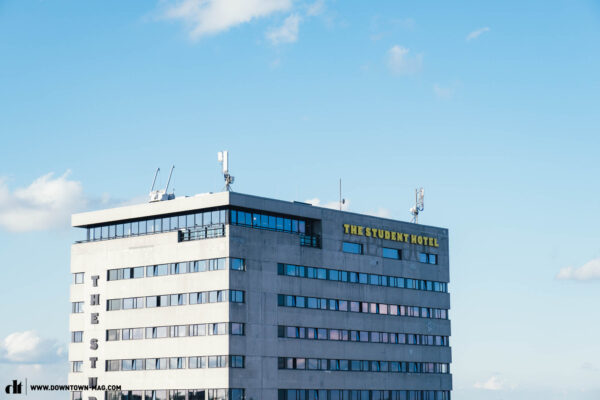
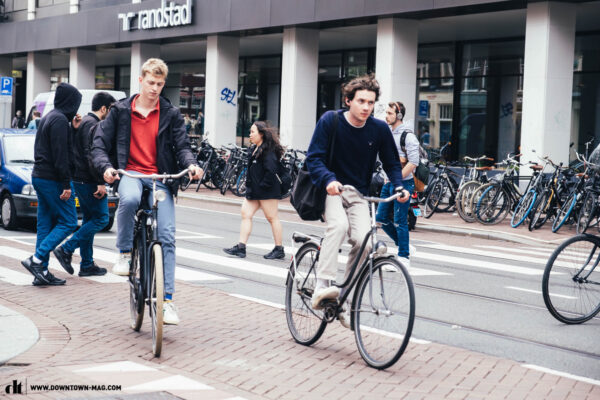

Amsterdam Int.
Amsterdam’s population is growing at a rate of around 11,000 people per year, with more than 176 nationalities on the books. The percentage of Dutch residents with a migrant background has almost doubled in the past three decades going from 1.2 million to 2.3 million. The most represented group are Indian citizens, followed by the US and the UK, while Western Europeans make up the bulk of the rest. It lends itself to incredible diversity, seeing an intermingling of languages, cultures, knowledge and cuisine. Amsterdam is something of a beacon when it comes to tolerance and celebrating diversity – and it’s not a new thing either. As far back as the 1600s, the town has promoted religious freedom, which is what drew writers and academics to its narrow lanes.

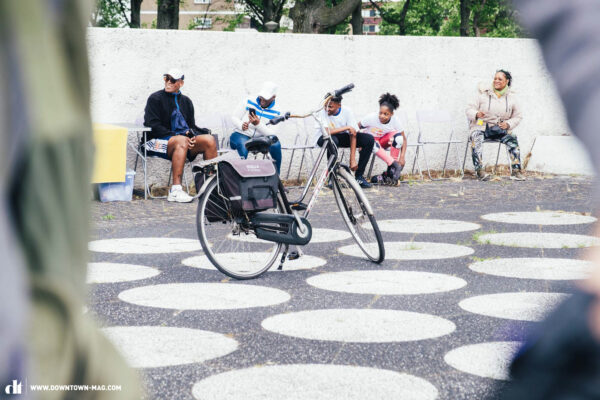
God save the … Proost!
Once a year the whole country is decked out in orange to celebrate Koningsdag, or King’s Day. Hard to miss, these days there’s more of a general focus on partying than national pride, but we have it on good authority that there’s no better or worse time to visit Amsterdam. And that largely has to do with the price of a hotel room and the crowds, which are fairly jaw-dropping even on a regular day.
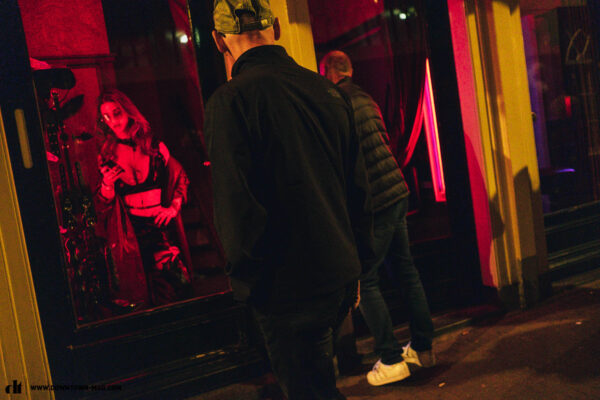
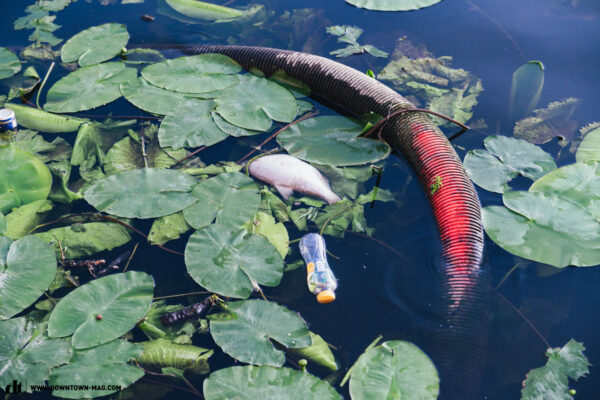
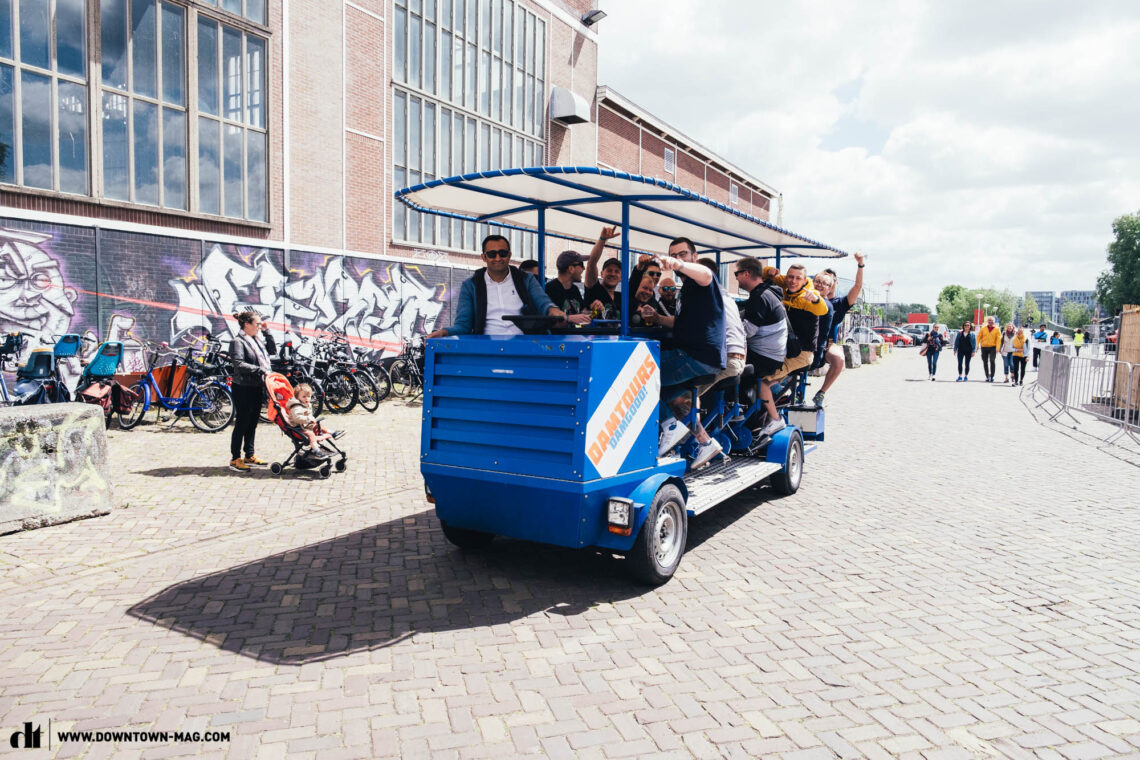
Amsterdam doesn’t just have a drug problem…
Aside from the measly 21 days of sunshine each year, there are other drawbacks to A’dam, namely a drug war that’s as dramatic as anything you’ll see on Netflix. Given its relaxed stance towards drug usage, the Netherlands has become something like the Mexico of Europe as a producer and distributor of all sorts of drugs, meaning that the country generates more than 19 billion euros each year through production alone. Something of a paradise for cartels, gang wars are becoming fairly commonplace, but it doesn’t appear to be deterring the tourists (you could even argue the lax approach to drugs is part of the appeal). It’s fair to say that the sort of tourist that comes to Amsterdam for headiness and intoxication isn’t usually a hit with the locals.
Amsterdam’s tourism hit an all-time high just before the Corona outbreak with 22 million visitors in a year (we’re talking hotels, b&bs, guest rooms and the like). Even just below this figure, the narrow lanes of the city can easily feel crowded given that there’s a constant flow of trams, bikes, pedestrians and cars (albeit not on certain streets). We won’t be seeing 22 million again, as soon afterwards the city became the first in the world to adopt a cap on visitor numbers – 20 million overnight stays per year – majorly exceeding the figure of 12 million that residents were appealing for.
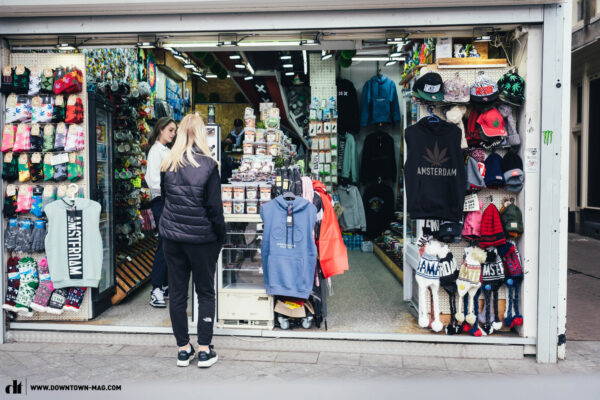
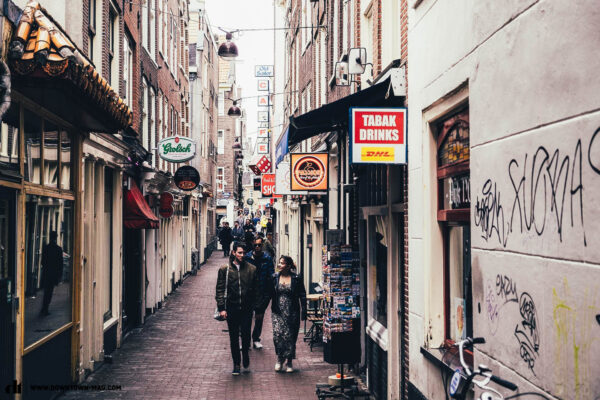
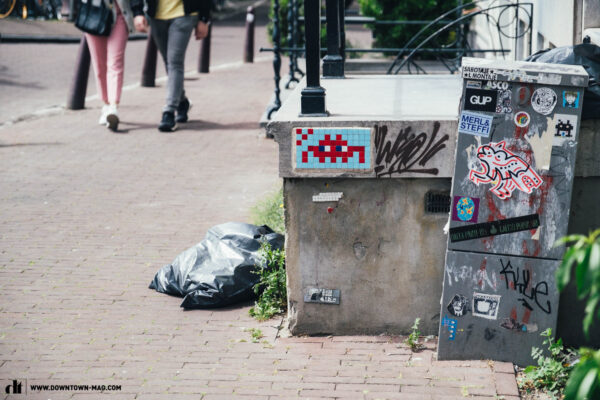
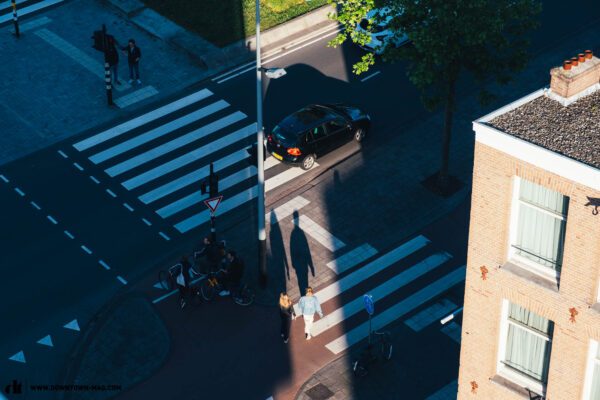
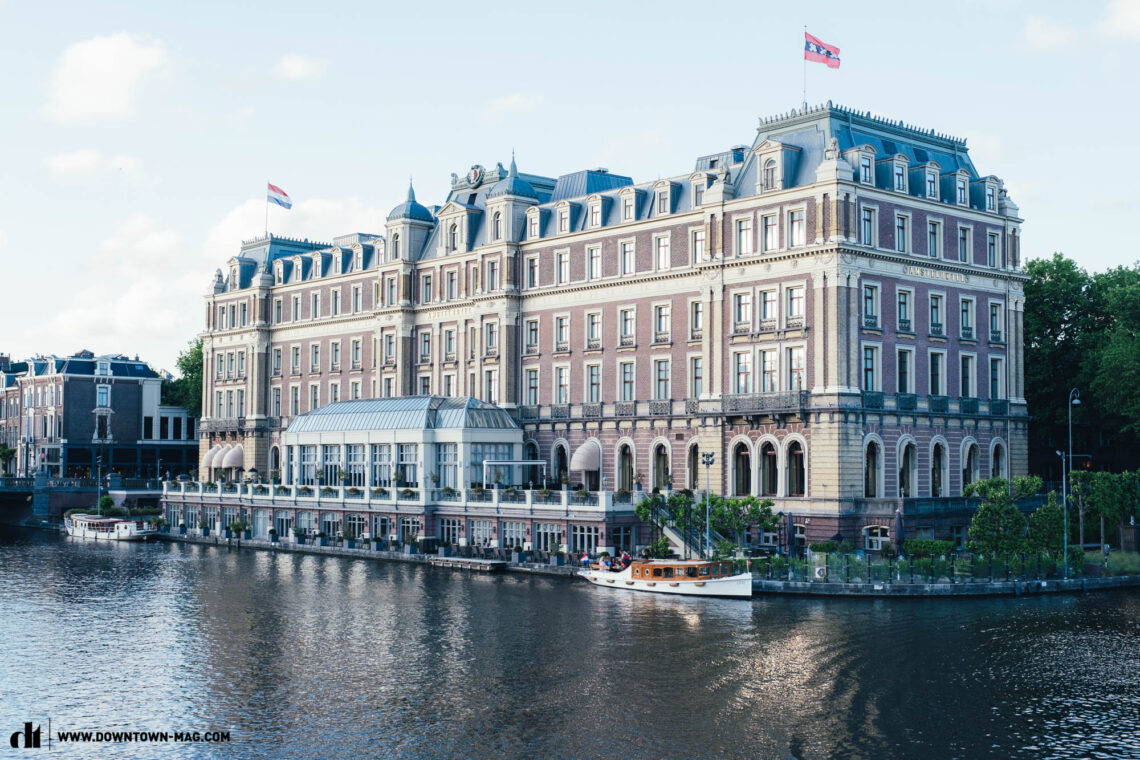
XXX – The symbol of the city
There are three crosses that you’ll spot on every corner in Amsterdam, sometimes horizontal, sometimes vertical. These St Andrew’s Crosses, or Saltires, are meant to commemorate an apostle called St Andrew who was allegedly martyred on an X-shaped cross called the Crux Decussata. It’s a good story, but there are, of course, opposing theories, with some arguing that the crosses represent the original threats to Amsterdam: flooding, fire, and the Black Death, while others claim it’s a take on the shield of a noble family who went by the name Persijn. What do we believe? Who knows. Probably nobody for certain any longer. Aren’t they more likely to associate XXX with the Red Light district these days?
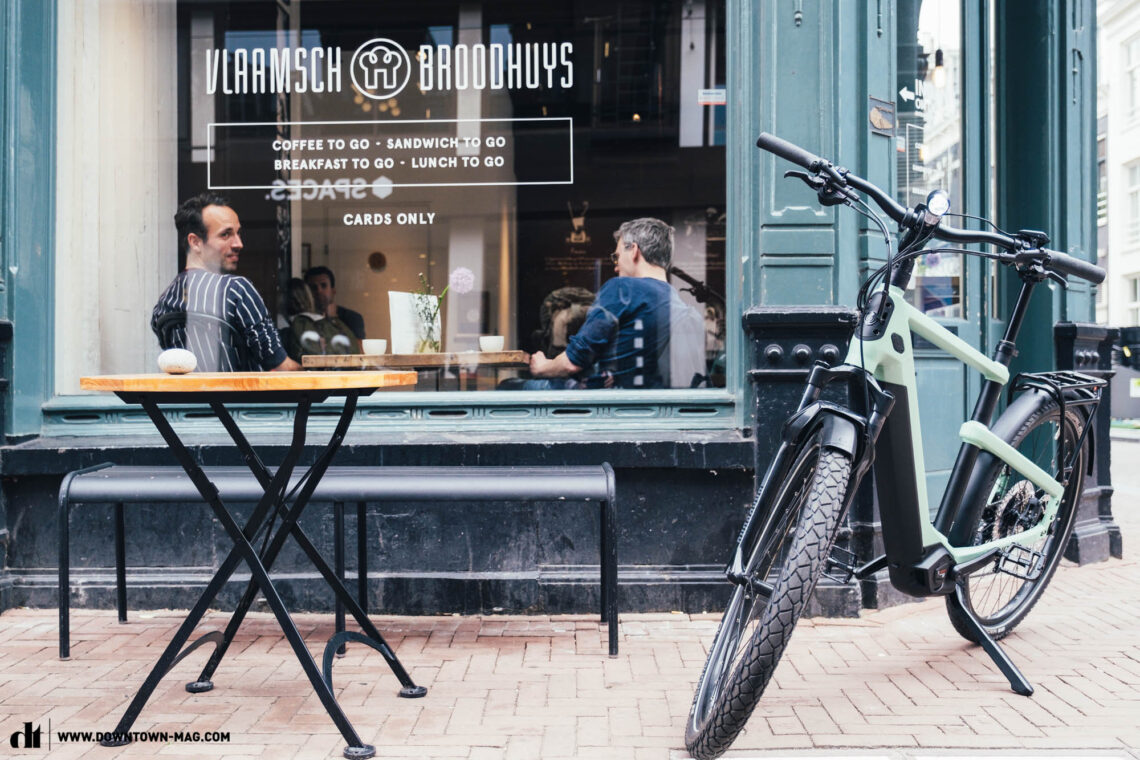
With so many layers, we knew we wouldn’t find the real Amsterdam in the red-light district and almost certainly not in the coffee shops. Now that we’d crammed on the city’s history, it was time to unplug our bikes and get to know the Amsterdam of today with all its curious nooks and crannies.
2/6 Who needs a car… when you’ve got a bike
It’s been said before and it’ll be said again: Amsterdam is best seen by bike. We picked the best wheel to follow in the form of Amsterdam native Roos Stallinga, who led us around the houses (in the best possible way) before pulling up in the city’s northern hemisphere which is still largely untouched by suitcase-wheeling tourists.
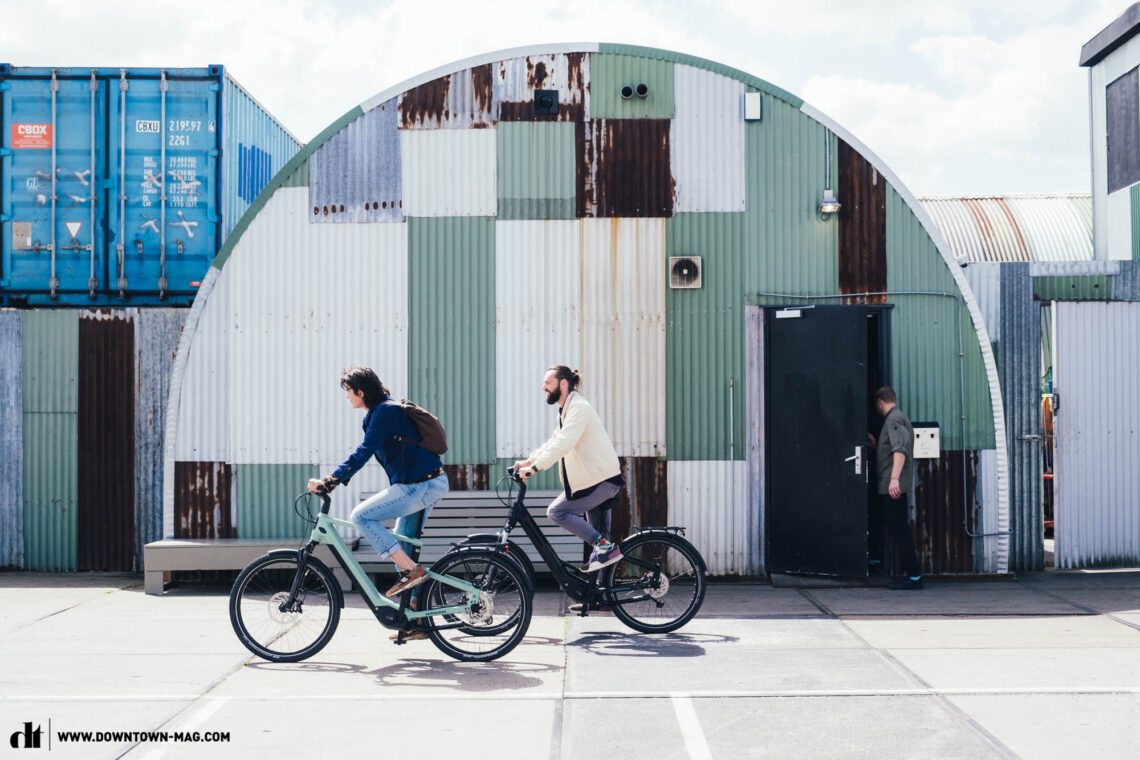
If you were looking for the embodiment of the Amsterdam vibe, then Roos is the right person. A committed cyclist (she rides so much that she’s written multiple books about bikes), she’s also creative, cool and open-minded. Her “Ride With Me” bike guide series is a two-wheeled homage to cities like New York, Amsterdam and Barcelona.
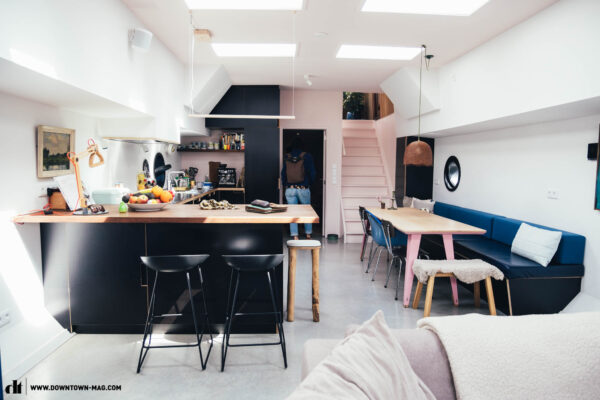

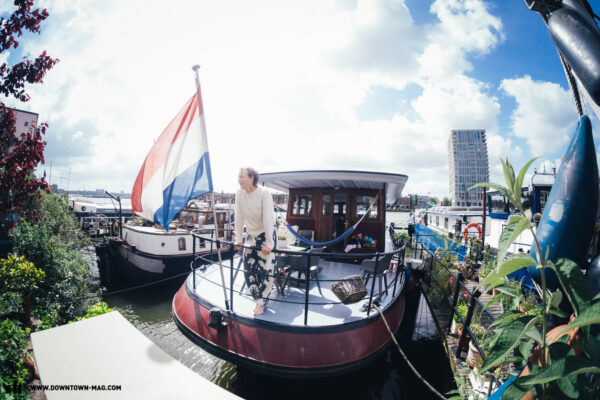
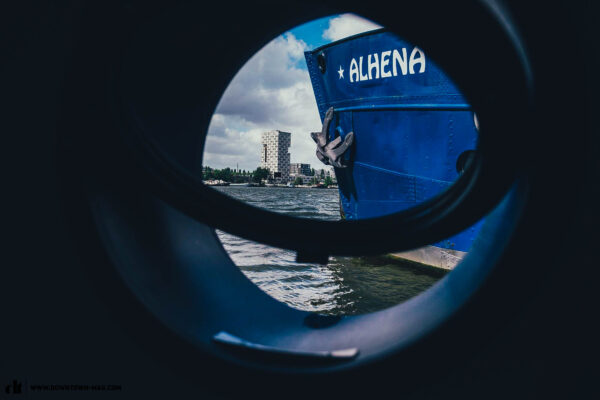
It’s still early when we meet up at the designated spot, but the friendly way she greets us sets the tone for the day: take it easy and let’s roll with it. It’s partly her fault that we miss two consecutive connecting ferries to the north. You see, Roos invites us to meet for a quick coffee at her friend’s houseboat, failing to mention that we’ll immediately feel at home and won’t want to leave. Instead of talking about Amsterdam’s bike life, the topic strays onto houseboat territory and whether we can afford one. Once docking fees and rent prices are mentioned, our dreams are crushed. It’s time to get on our bikes and switch to Turbo mode so we won’t miss another ferry. Roos, who obviously rides a classic town bike, gets to try her first ebike: the WINORA Yakun 12.



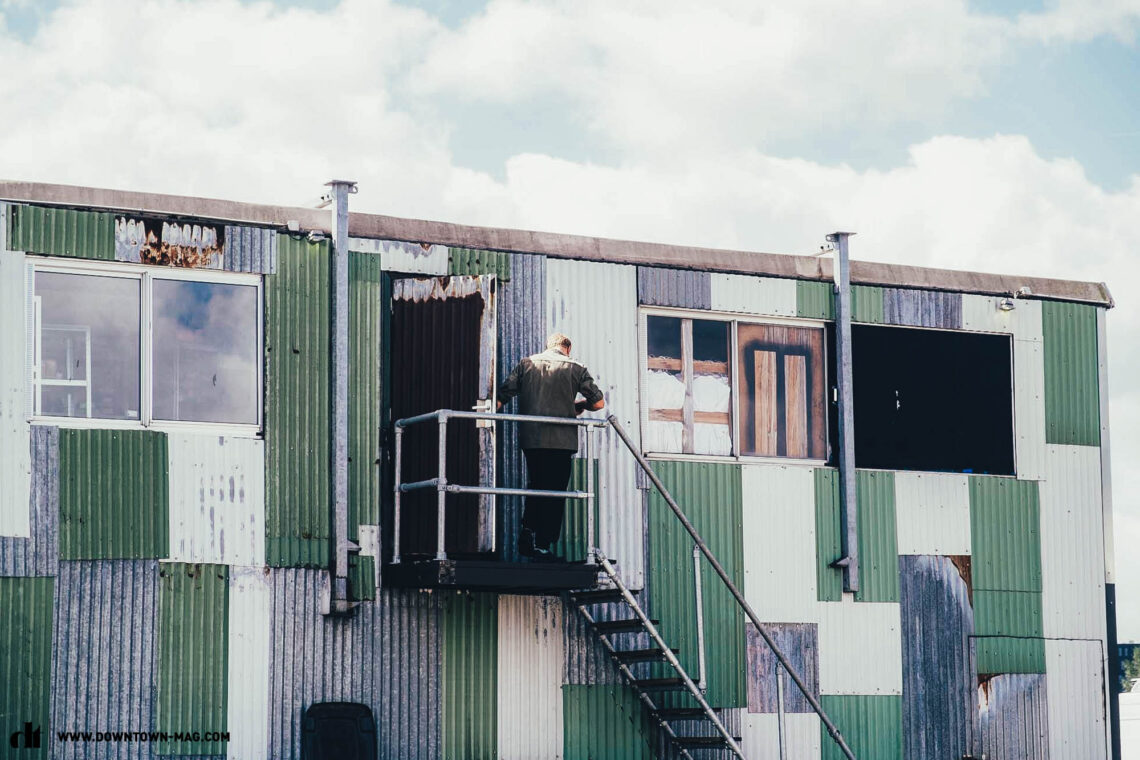
The electric-powered boat doesn’t cost anything for pedestrians or bike riders, casually chugging across the IJ estuary (yep, no need to look this up, that’s just two letters) towards the north of the city. As we leave behind the crowded centre, it isn’t just the boat that’s moving slower but also our heart rates – it feels good. There’s a gentle breeze and white breaks on the water that catch your eye. Chatter breaks out spontaneously amongst the other boat travellers doing the south to north crossing. The sun is shining, and we’re promised that the grass is greener on the other side. They could be right: we get off the boat in an eclectic once-industrial area that used to play a big part in housing shipyard workers for the booming industry.

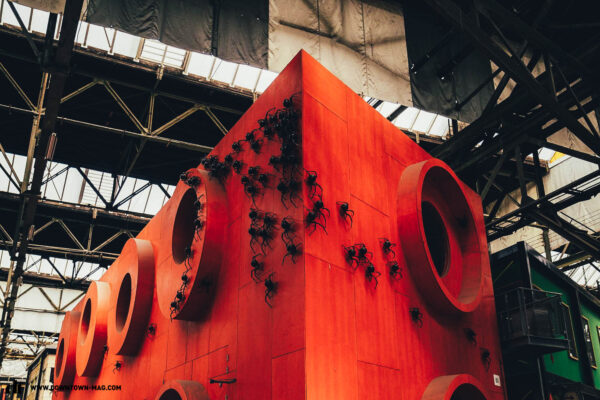


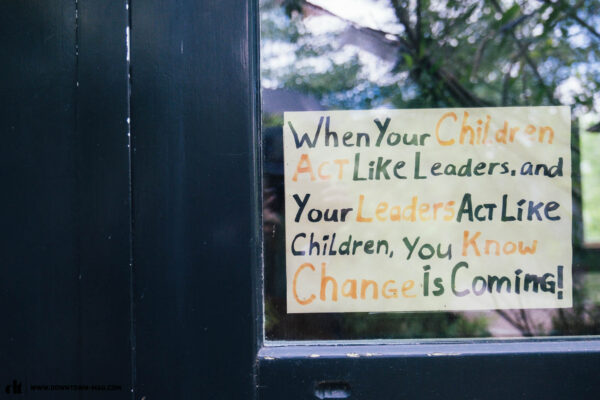
Since the 1980s, North Amsterdam has been transitioning into a creative hub, with repurposed boats and buildings, and plant-based cafes and new initiatives springing up under an influx of young, driven people. You’ll find oat milk in your flat whites, a cult cinema showing even more cult films, an indoor skatepark, beekeeping, and artists’ studios, such as the cultural NDSM complex. While you’re in the area, check out the vibrant street art, which inadvertently doubles as a free open-air museum.
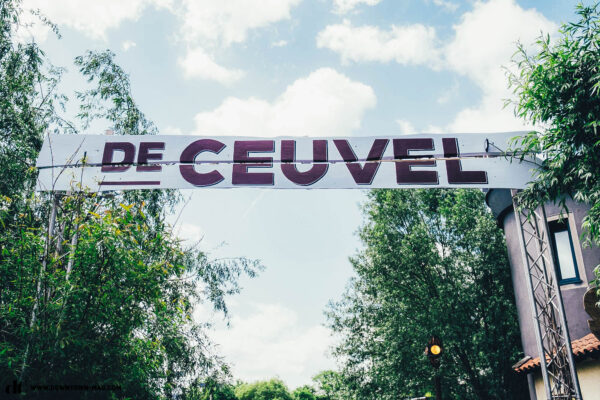

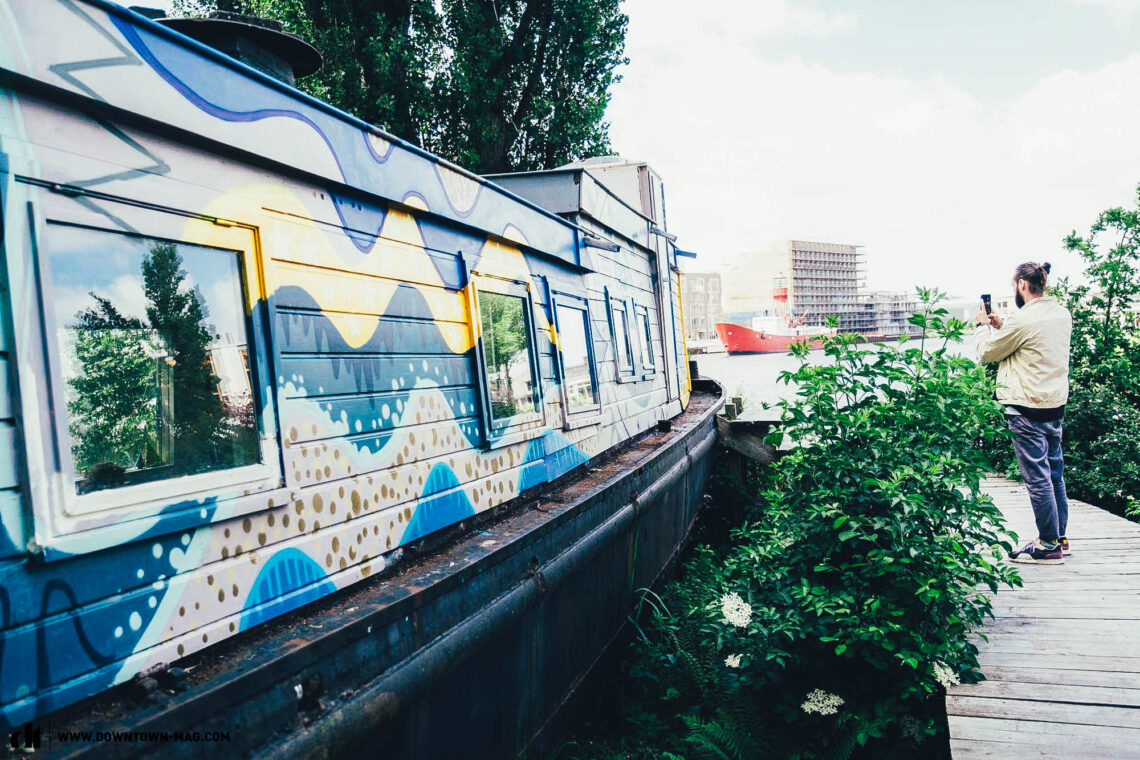
If there’s one project that stands out it’s De Ceuvel, a fine demonstration of how a circular economy should work today. An award-winning, sustainable place for creative and socially-minded businesses as well as a floating b&b, it was conceived by a group of architects as a way to regenerate the area and create an urban oasis. There’s a wooden boardwalk connecting renovated houseboats, where the thinkers of tomorrow sit and, well, think about tomorrow. We wouldn’t be far off the mark to describe it as a creative playground for sustainable technologies, which we learn can be self-sufficient in both energy production and waste management.
But much like other urban regeneration projects that liven up cities around the world, the curse word gentrification is never far away and the impact here is visible in the brand new buildings that have sprung up as investors saw dollar signs across the water. We ride past kids’ festivals, pieces of art and grassy fields where locals are grabbing some peace and quiet. It seems like a cool place, but full of contrasts, as we stop in front of some large-scale graffiti that read ‘Make art, not €uros!’ – is it a futile attempt to keep gentrification at bay or will North Amsterdam succeed?
Next stop: Hembrugterrein, another former industrial spot on the border between Amsterdam and Zaandem that is a long way from underrated. Called HEM – the historical term for land that was outside of the dykes – this place has turned an ex-munitions factory into a cultural centre, housing restaurants, museums and creative spaces. Knowing that building permits are notoriously difficult to obtain, the people who set up this place clearly took cues from the rest of the city’s creative herd and ran with pre-existing structures. In a building where artillery and firearms used to be produced for the Dutch army, we grab lunch, explore some art exhibitions, and make sure we reserve a table for dinner in a different part of the complex for what’s going to be a standout part of the Amsterdam getaway.
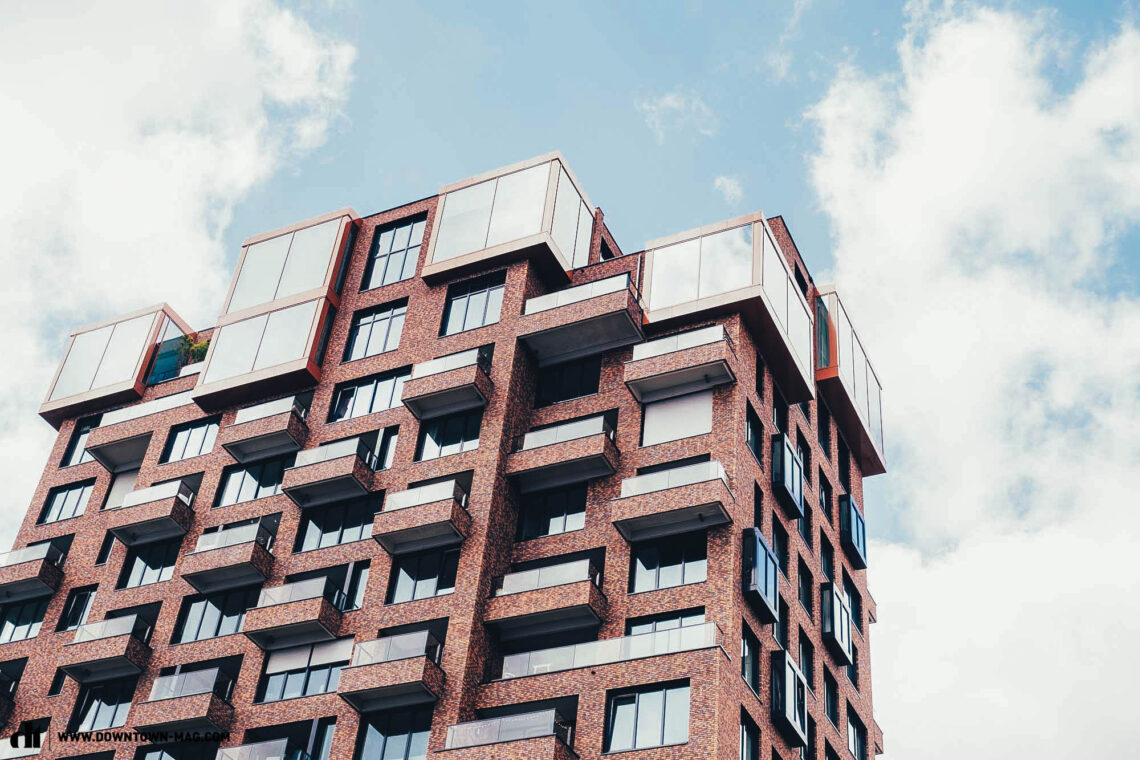
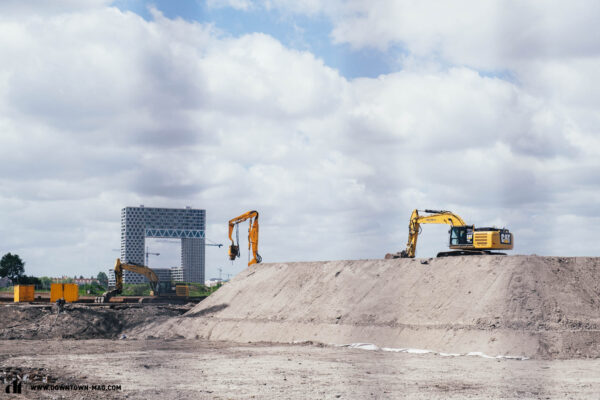
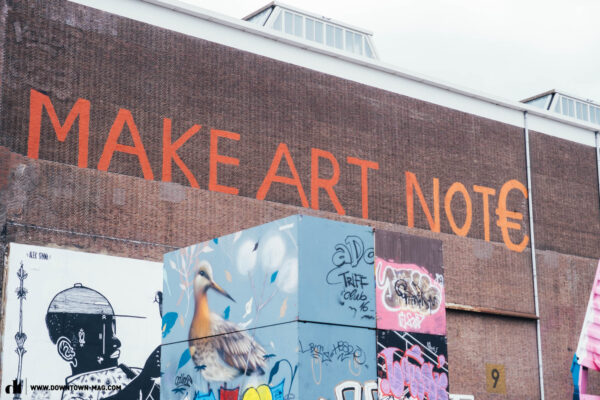
Around the Hembrugterrein, there’s a host of creative ventures and museums, including the contemporary culture space Het HEM, the Museum of Humanity, Lab-44 and BIND. Housed in a former transformer building, BIND is described as a ‘living laboratory’ for new projects. Come here expecting to discover some of the most vibrant, inventive projects on the go, including music, poetry, history and art, and you won’t be disappointed. Come evening, everyone wants to be on the guestlist here – even fresh-faced teenagers who are still years off the guestlist.

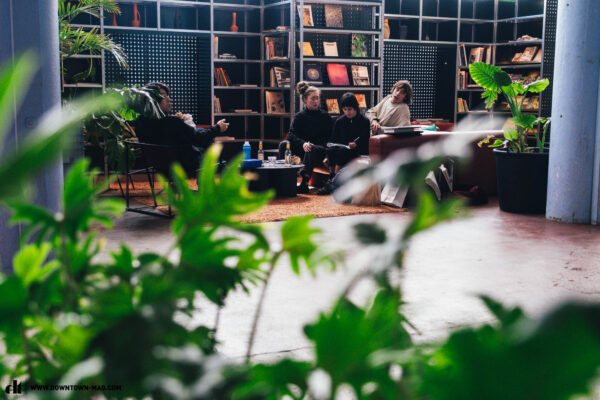


We know, you came here for Amsterdam, not the northern borough, so we head back over the water on one of the iconic blue-white boats that ferry around 20 million passengers per year. Roos wonders if she can borrow the ebike for one more day. She grins: “It makes cruising around the city even more relaxed and easy than it usually is.”
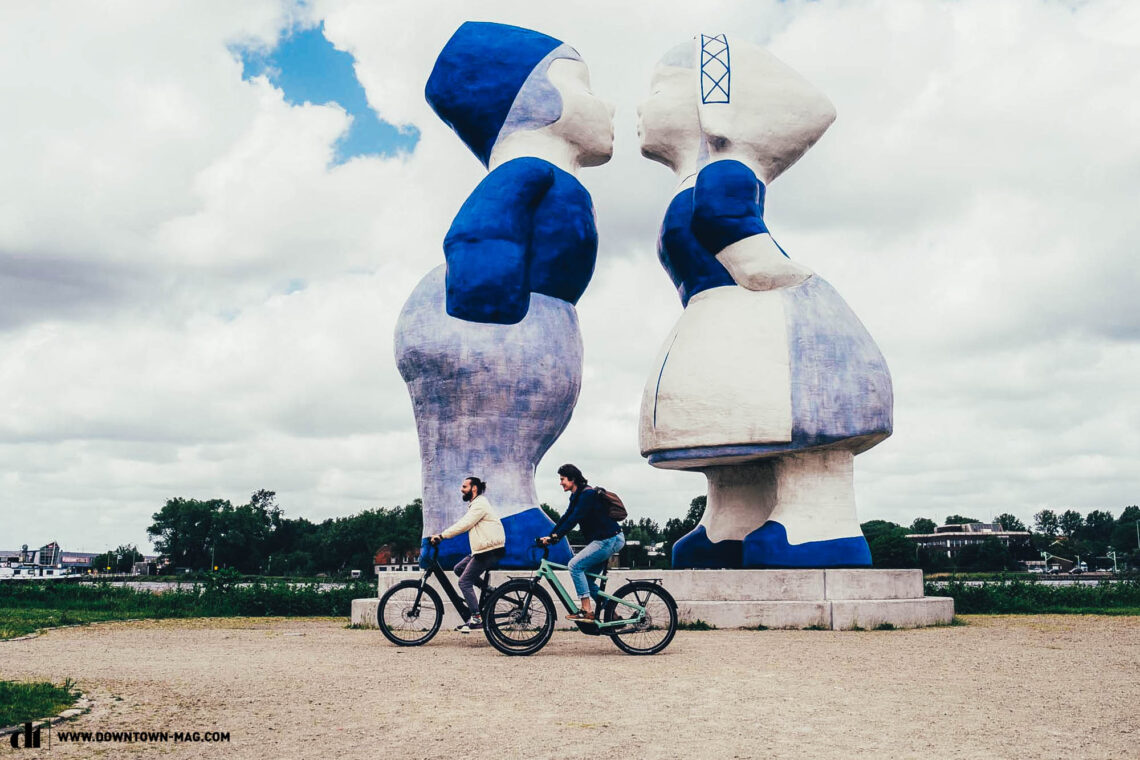


We don’t stay in the centre for long again – we’re headed to the beach this time. It sounds mad, but it’s less than two hours by bike from Amsterdam to the coast, where laidback cafes and surf vibes await. On the pedal-assisted WINORA bikes, we significantly speed up the two-hour ride time and enjoy a burger on the beach after a quick dip. On the way back, we detour into the less-bucketlisted town of Haarlem with cosy lanes packed with trendy cafes and even more cultural spaces.
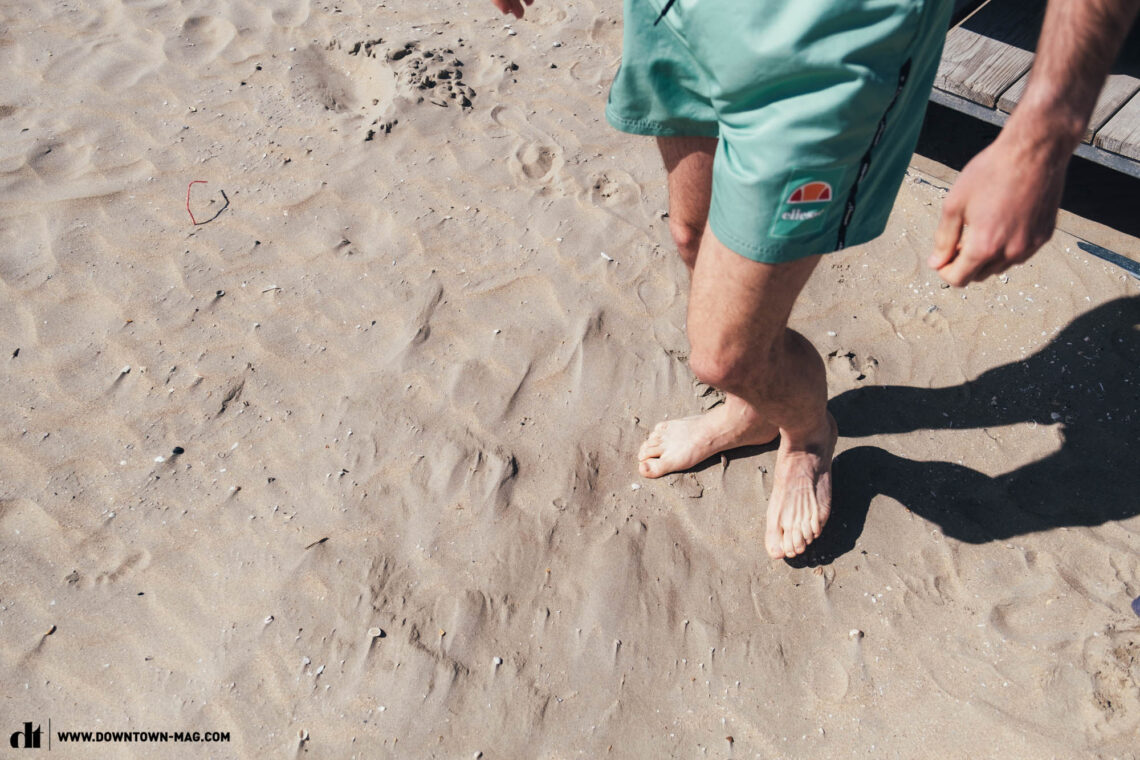




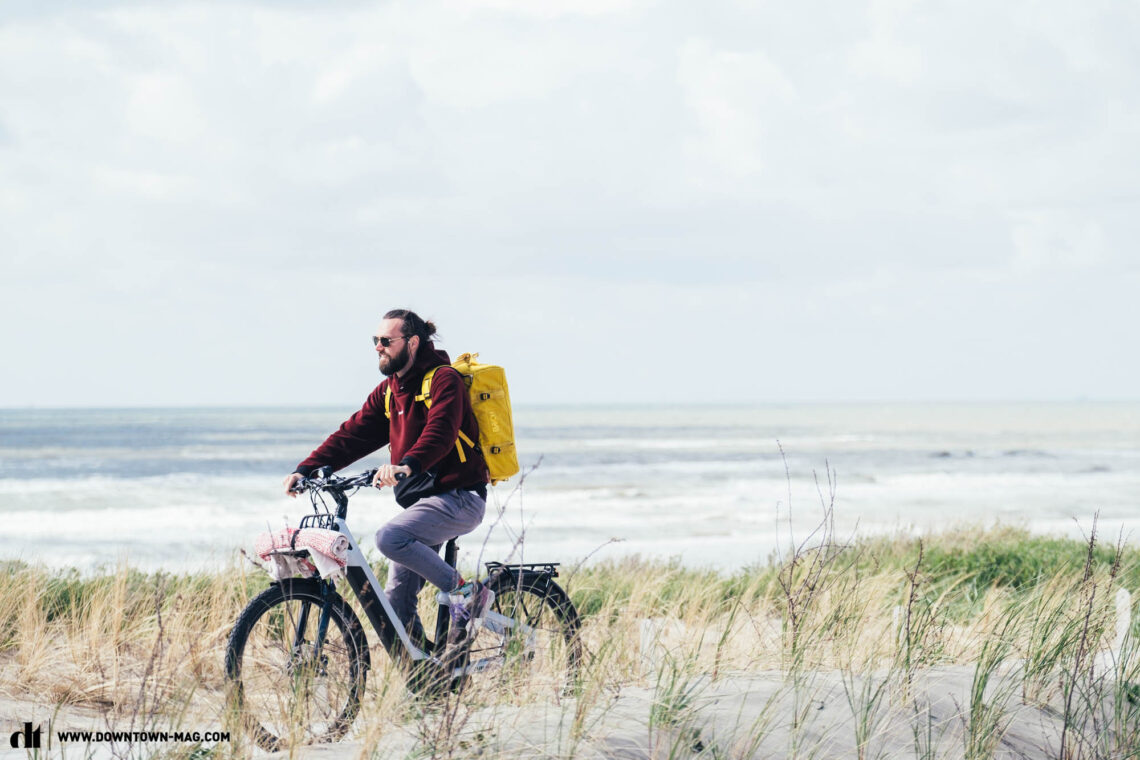
Top tip: Make sure you plan a whole day’s itinerary in and around the edge of the water in Amsterdam. Keep it lowkey, eat well, be surprised, source some inspiration, and keep riding towards the coastline if you’ve got time. As we discovered, Restaurant Bois in Hembrug is definitely the move if you’ve got time for a 8/10-course menu. It was seriously worth the hype.

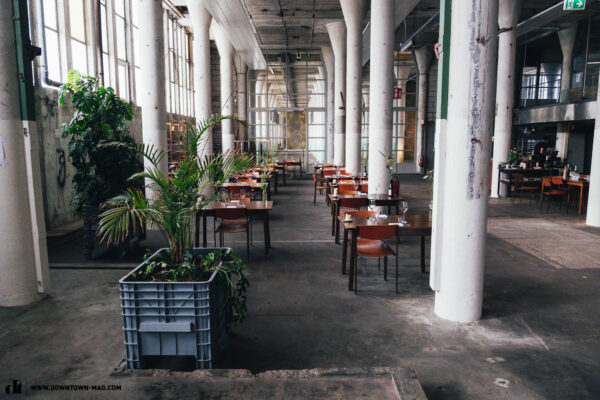
3/6 Cycling Etiquette – Rules for a revolution
While Amsterdam is often falsely referred to as the world’s cycling capital (Hej Copenhagen, we see you!), it is fair to say that bikes have priority and cars are merely a guest on the road here. You’ve got police officers on bikes, parking garages for bikes and services that even tow your bike away if abandoned or mis-parked. Here’s what the world can learn:
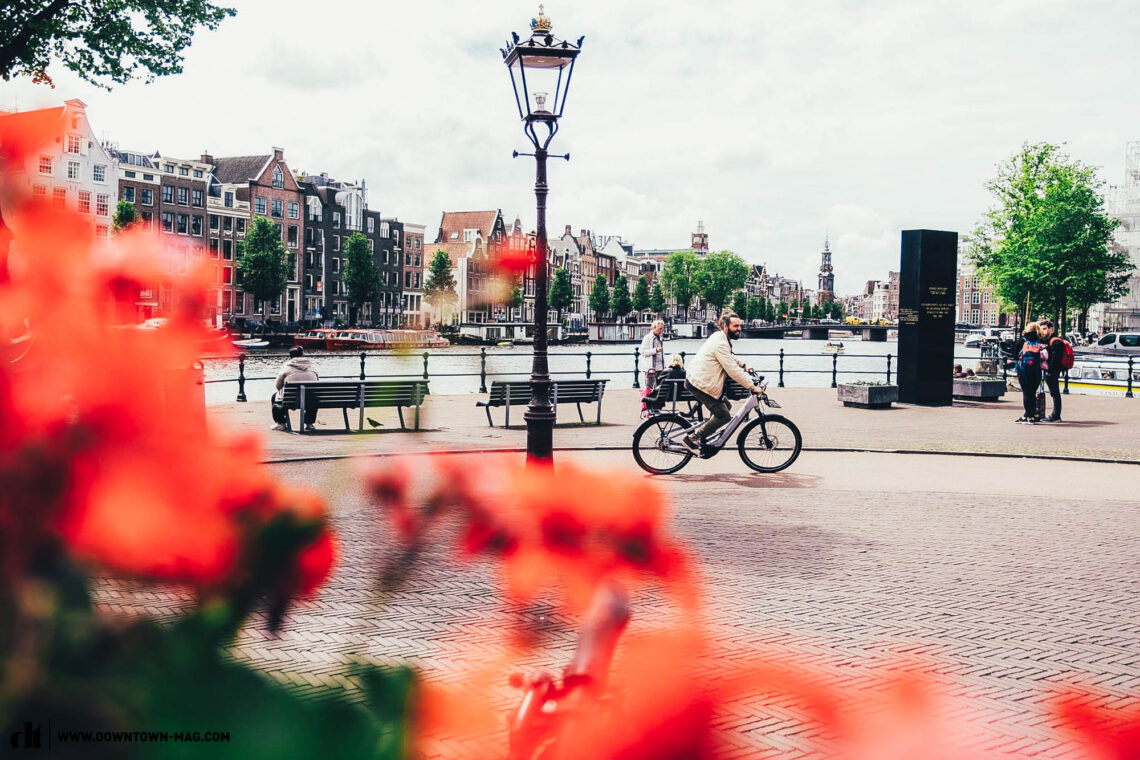
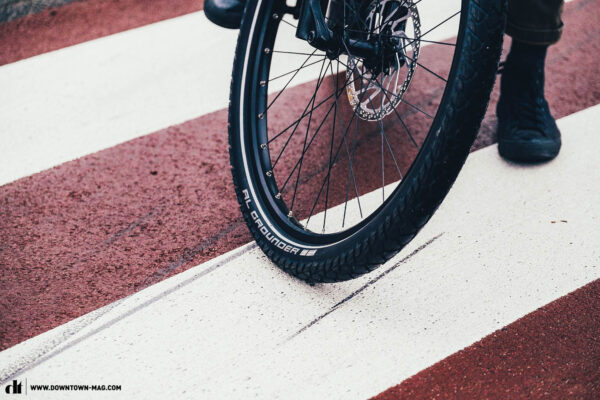
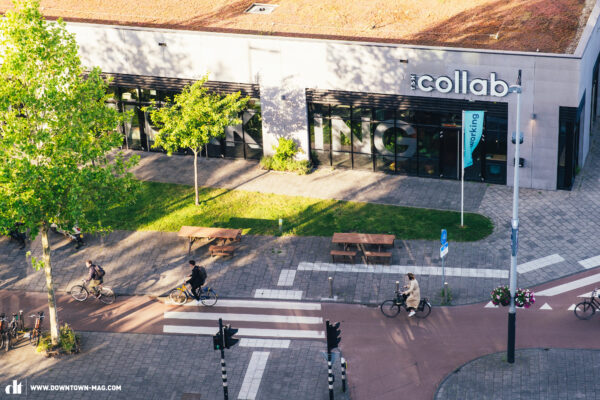
Please park here
Divided amongst the 900,000 residents in the city, there’s supposedly 700,000–800,000 bikes, which immediately makes us wonder what the other 100,000 do to get around? Who are they? When we learn that municipal workers ticket and collect more 75,000 bikes annually if they appear to be abandoned, are taking up precious space on a rack and haven’t moved for two weeks or are just in the way, we wonder if these 100,000 people all fell victim to this strict service. The neglected bikes are carted outside the city to a prison-like facility, where you’re forced to pay a €25 fine to collect your own bike.

Lesson: Use a designated bicycle parking space. You won’t have to look far, there are 10,000 of these at the train station alone.
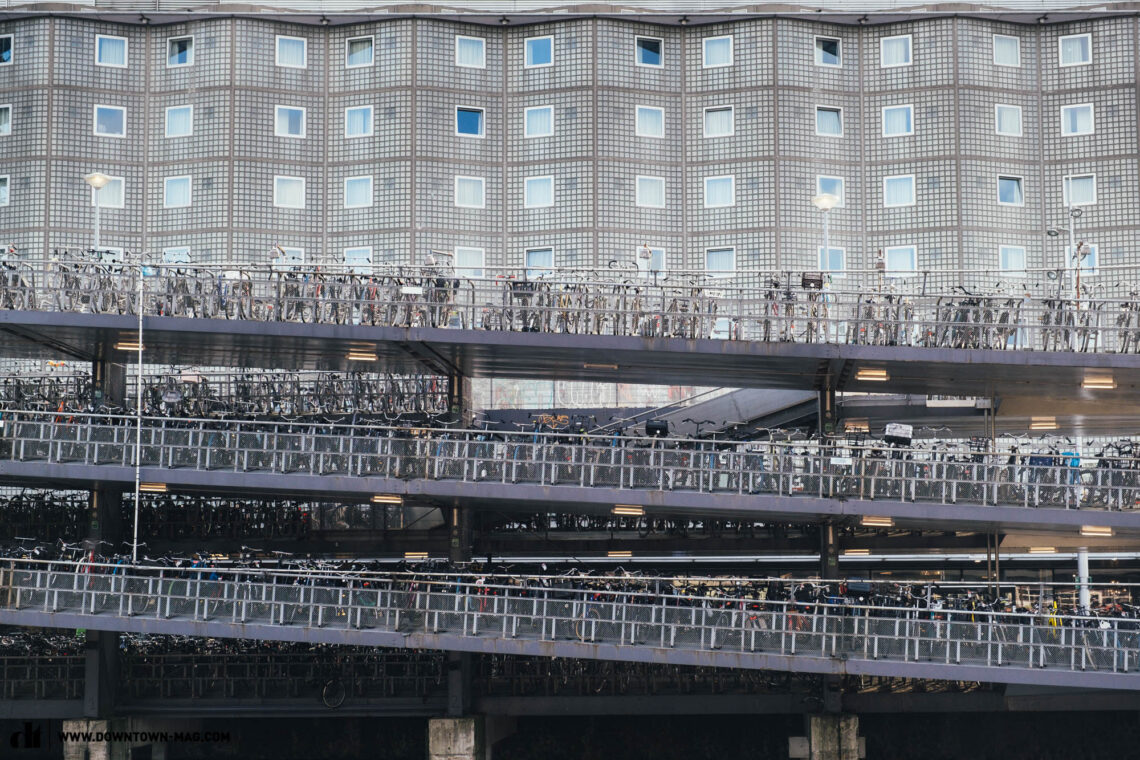
I like to move it!
According to the fitness tracking app Human, the Dutch capital is the most active in the world. And despite all the frietjes and frikandels, the Dutch are set to be the only nation in Europe that won’t be classed as obese by 2030. It’s kind of strange given the fact that the average distance cycled per day is only 2.5 km per person, but when you consider that bikes are used for two-thirds of all journeys, totalling around 2,000,000 km each day, you realise it all adds up. There’s around 800 km of intricately connected bike paths that were introduced as part of the town planning rather than – like so many cities – as an afterthought. Worried about air pollution when riding in a city? We hear you. Amsterdam’s air quality is considered ‘good’, and at worst ‘moderate’ during the winters. Into recreation? You’re in good company whether you’re riding, running or swimming. We dutifully jump into the water and swim over to the other side of the Amstel.
Learning: The rest of the world, please take notes.
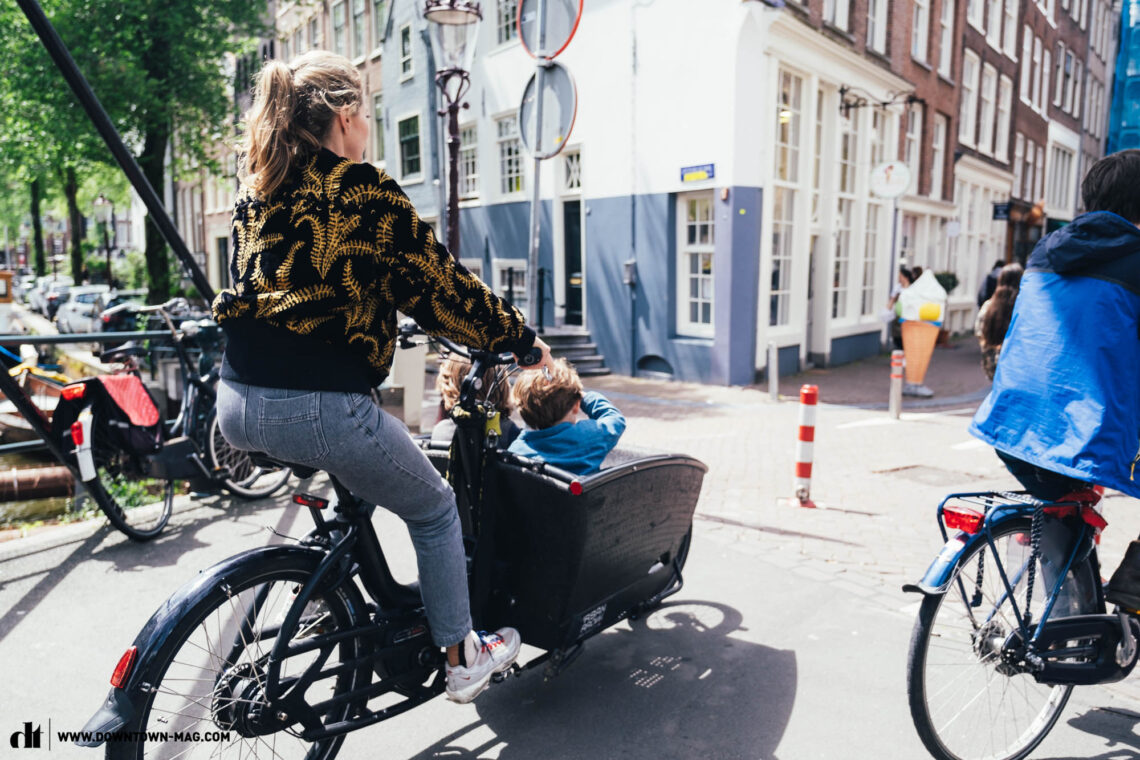
Head up, helmet off
While helmets are regarded as gospel in many places, they’re distinctly absent on the heads of Amsterdam riders (even kids on bike seats or in the luggage section of cargo bikes). You’ll learn that the locals understand cycling as a way of life rather than simply as a means of transportation. The Dutch hustle is the classic bike riding style here, letting the breeze flow through your hair with your nose pointed slightly upwards. The percentage of helmet usage hovers around 1%, and we – as Germans – are gently reminded of the saying that ‘Germans only wear a helmet because they can’t ride bikes.’
Learning: We also rode without a helmet, so we clearly didn’t learn anything.

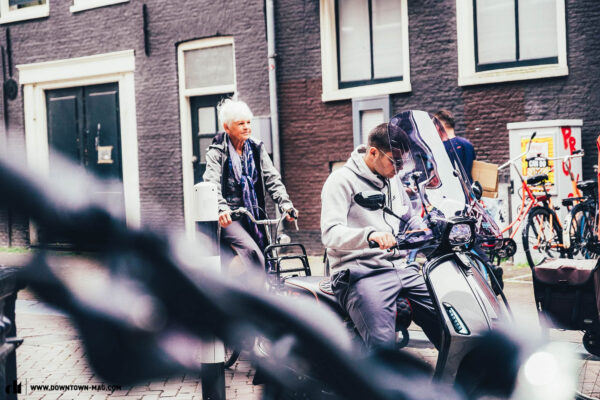
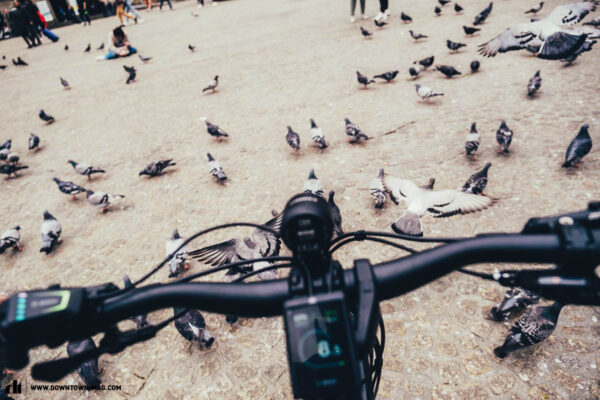
Keep the flow
In order to keep the wheels rolling, here are a few rules to take note of:
Amsterdamer bike etiquette
- Cyclists get priority.
- Whoever brakes first loses.
- Red is optional.
- Pedestrians are no reason to stop. You can weave by them.
- Build up speed over the ‘summit‘ of the town’s many bridges.
Now let’s be serious …
Roos Stallinga’s rules for riding in A‘dam
- Turning or braking? Always signal.
- Keep right at all times unless you’re overtaking.
- Don’t ride on the wrong side of the road.
- Never stop on the bike path – especially not for photos!
- Stop at junctions and give priority to vehicles from the right.
- Stop at zebra crossings.
- Don’t ever park your bike in the bike lane.
- Only ride side by side if there’s enough space for people to ride around.
- Double-lock your bike whenever possible.
- Go with the flow of the city.


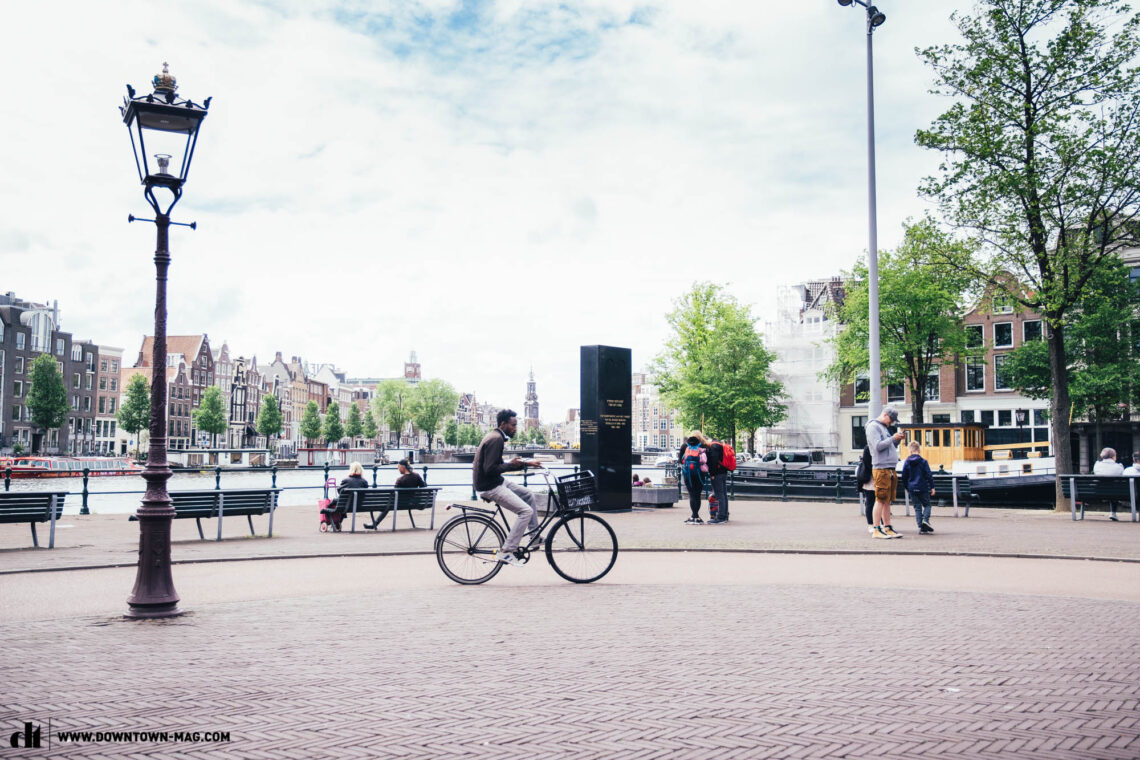
4/6 What’s up? A sample of people you’ll meet on the bike paths
Once you’re anointed into Amsterdam’s bike life, you’ll not only get to know the unspoken rules but also the riders. We waved down three local riders at a red light to get their take on life in Amsterdam. We swap bikes for a while, visit an apartment that wouldn’t be out of place in the pages of an interior design magazine and listen in on a live radio broadcast.
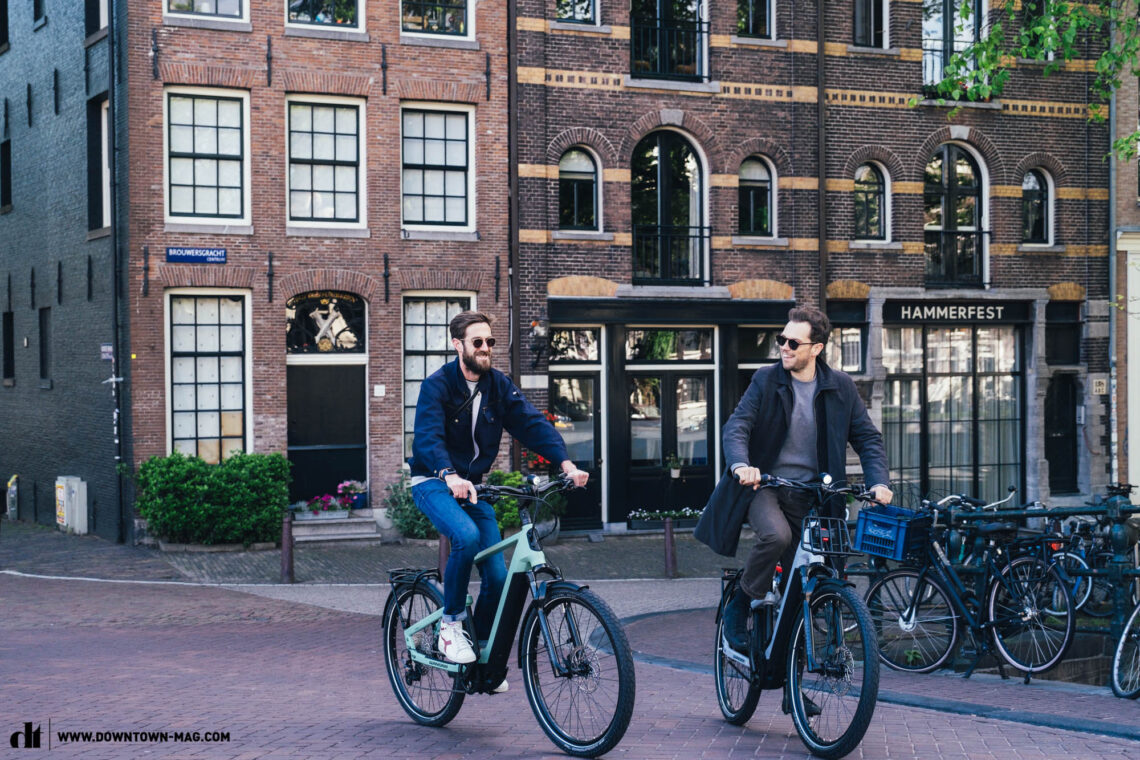

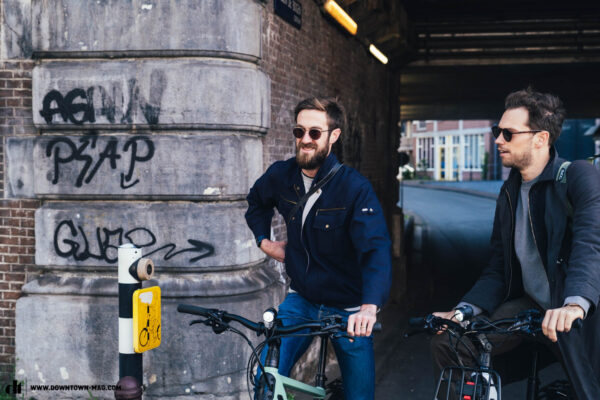
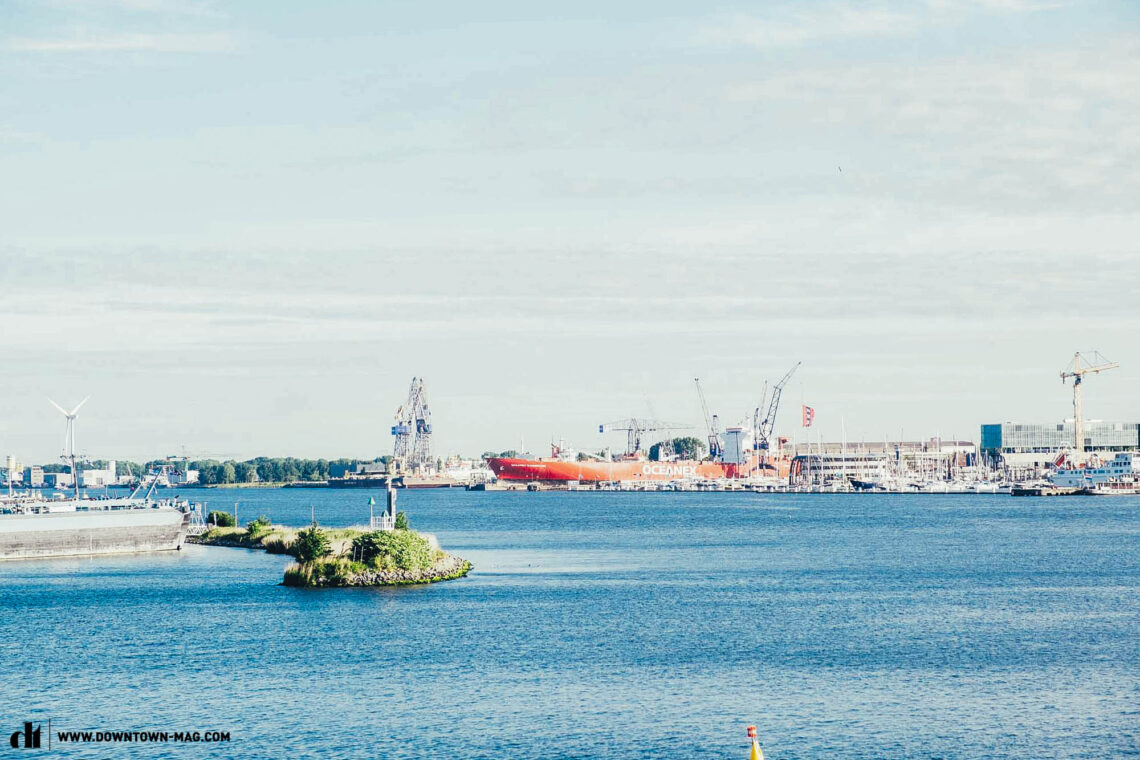
We bump into William Lounsbury on the western fringes of the city. The American photographer, who’s lived in Amsterdam for five years, is on the hunt for coffee and a good photo. He hasn’t owned a car for the past decade. We ask if we can follow his wheel to the best coffee in town and he immediately agrees – on the condition that we switch bikes for the duration of the ride. ‘I’ve never ridden an ebike like this. I see more and more of them around these days. Can I have a go?’ he asks bashfully. Our response: ‘Sure.’
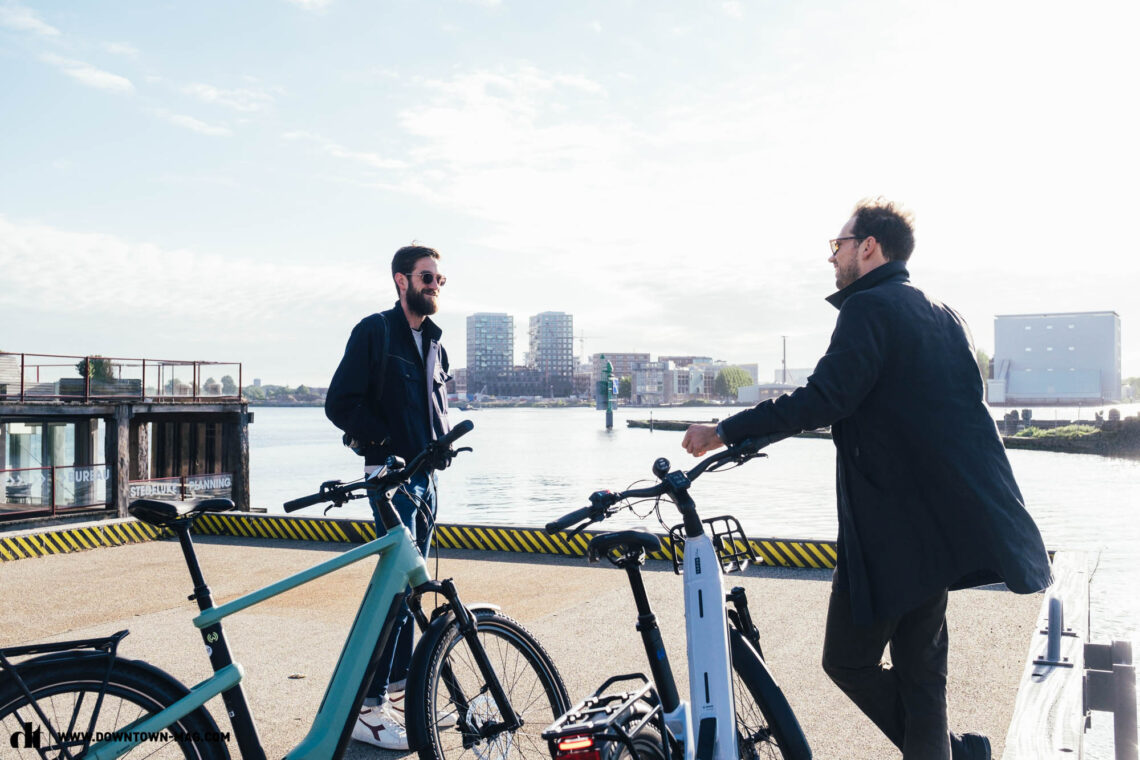
Given the great views, green parks and proximity to all the commuting bike riders, we don’t complain when William plainly takes us the scenic way to the cafe. We head through the expansive and verdant Westerpark that’s bathed in sunshine and into a lively neighbourhood that feels delightfully lived-in. Again, the cultural index is sky high and William points out an old factory-turned-cultural complex, where he got married.

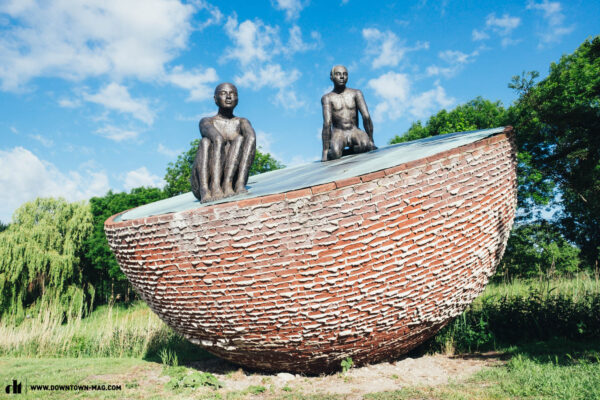
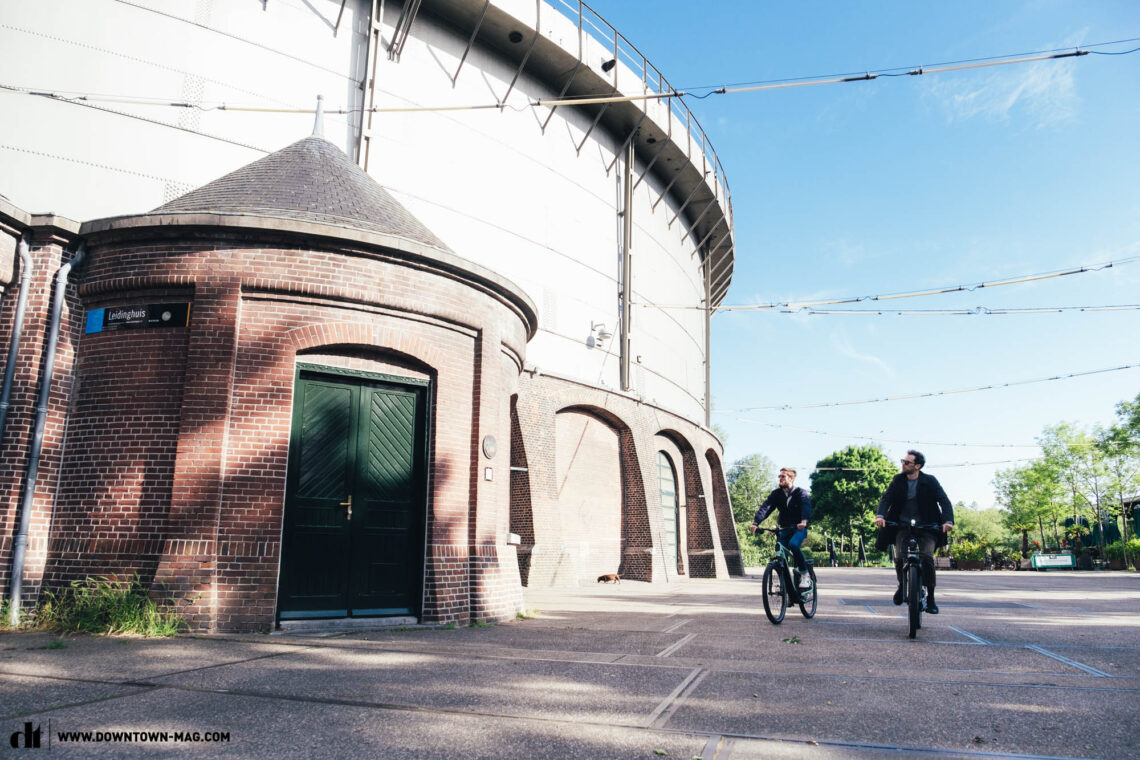
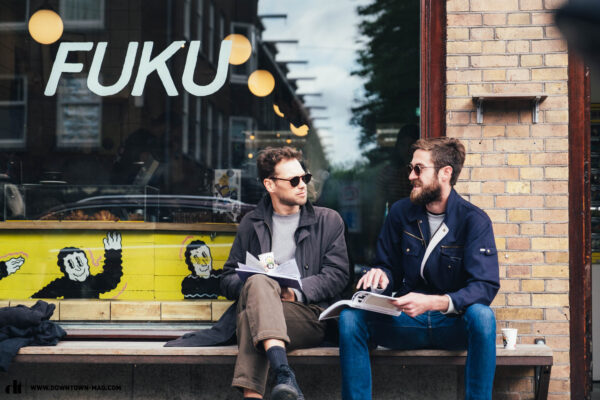

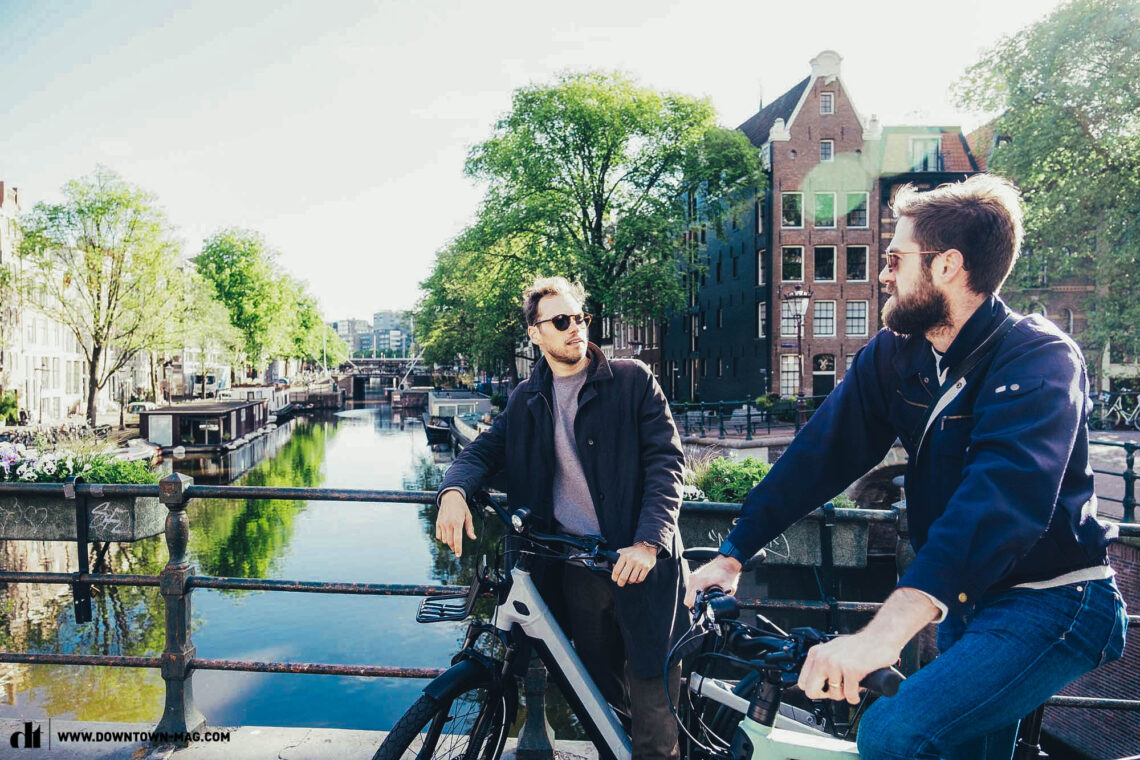
We’re revealing Amsterdam’s best-kept secret here now, but FUKU is worth the trip if you’re into coffee. The barista whipped us up a funky cappuccino, stating that we should return it if we weren’t happy. Er, no chance. This place took the cake when it comes to picking our favourite spot.
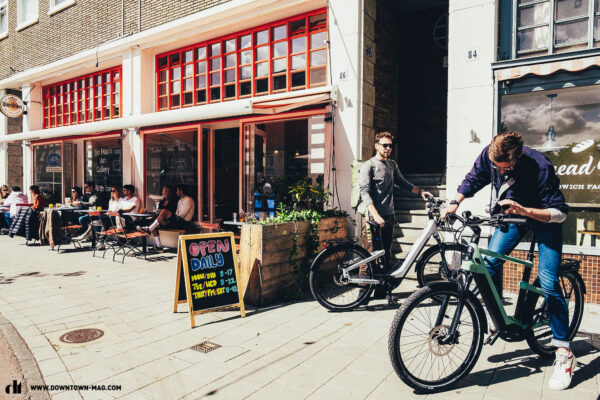
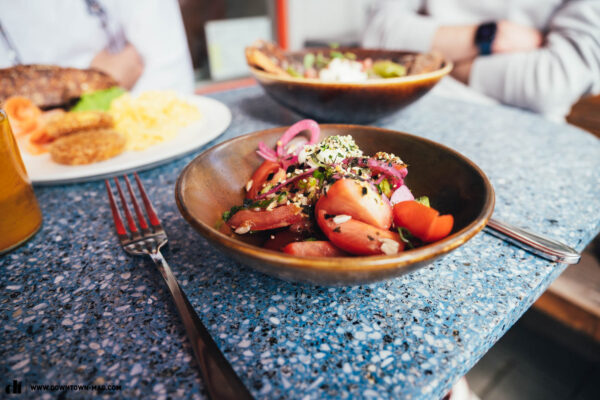

In return for the top tip, we insist on taking William for breakfast at Samen Lunch & Juice, which is next door. Making the most of the extra time caused by our lost order, we chat to William about what brought him to Amsterdam (love, what else) via Paris. The freelance photographer who works on documentary-style projects feels very at home here now – he particularly appreciates the photographic side of the city, the creative community, and how almost everyone speaks such good English. His most recent project involved a book of short stories and portraits of residents in the Bos en Lommer neighbourhood, which happens to be the eclectic, vibrant spot where we are right now. While he’s acutely aware of how he’s an inherent part of the gentrification, he knows how important it is to recognize and celebrate genuine locals.
Like so many cities, districts with a lot of social housing are being transformed, seeing a shift towards trendy rental properties in a bid to attract the young and wealthy, particularly from abroad. The result is an inevitable surge in rent prices, new investment projects, more tourism, and a change in the cityscape. Long-term residents of the area are being overlooked and priced-out. The transition from being a more working class area to a hipster zone is visible as you ride through – organic sourdough bakeries with minimal branding, and flat whites that cost € 4. For some, the neighbourhood’s trendy new nickname – BoLo – rolls off the tongue, but it leaves a sour taste in other people’s mouths. There are queues of ebike riders (us included) outside the must-go cafes, which have edged out Moroccan and Turkish shops, bakeries and barbers.
We ride through the neighbourhood of Slotermeer-Noordost where the roads are named after war heroes, passing the 37-metre deep lake where small sailing boats bob around. We fall into conversation with two anglers, one of which comes from a second-generation working-class Turkish family. We don’t pick up on any negativity about the shift in their neighbourhood just yet – the only complaint is that they’re yet to catch anything.
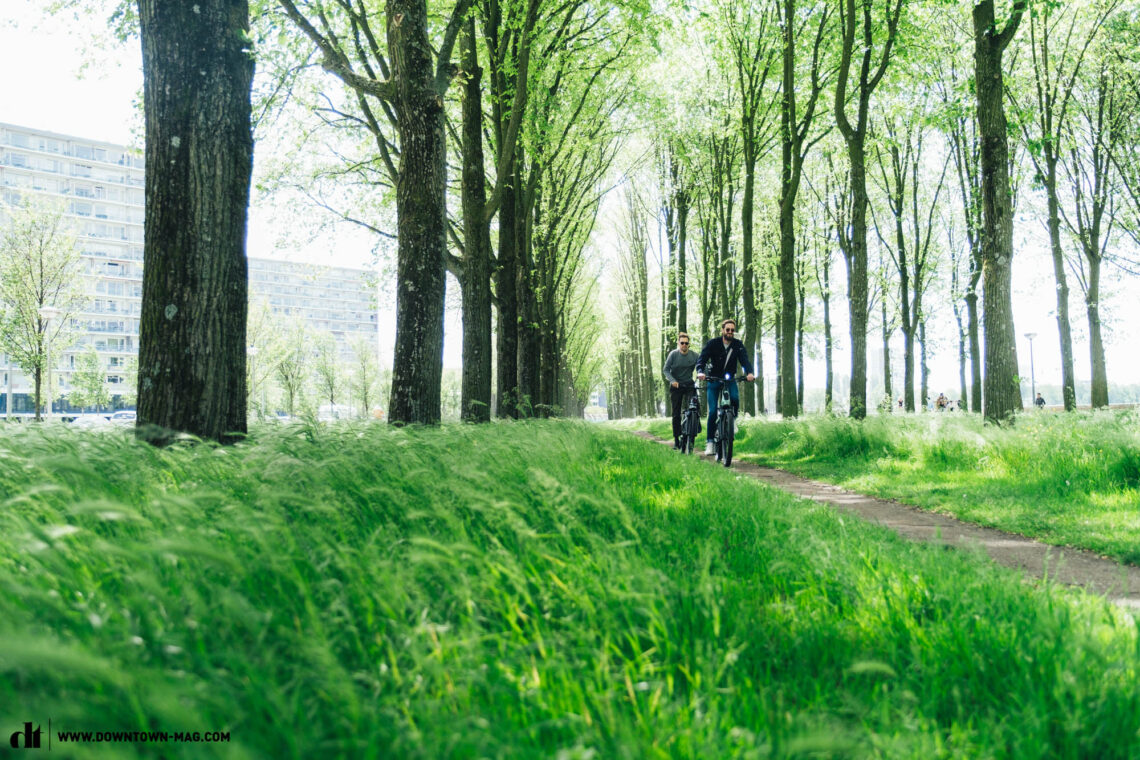
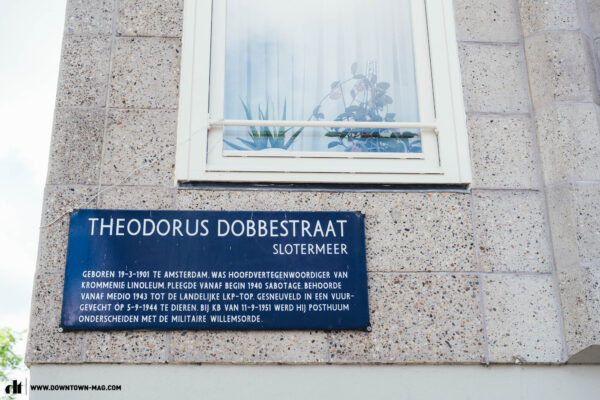
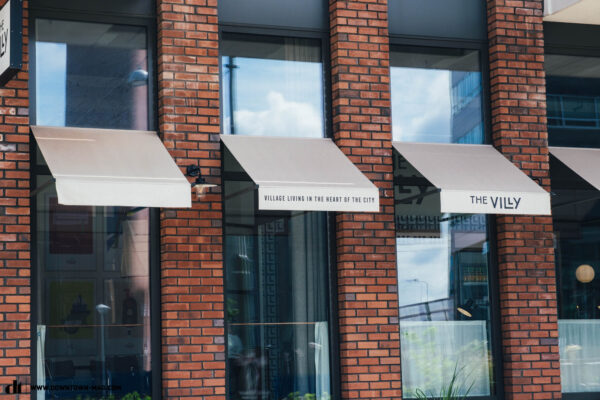
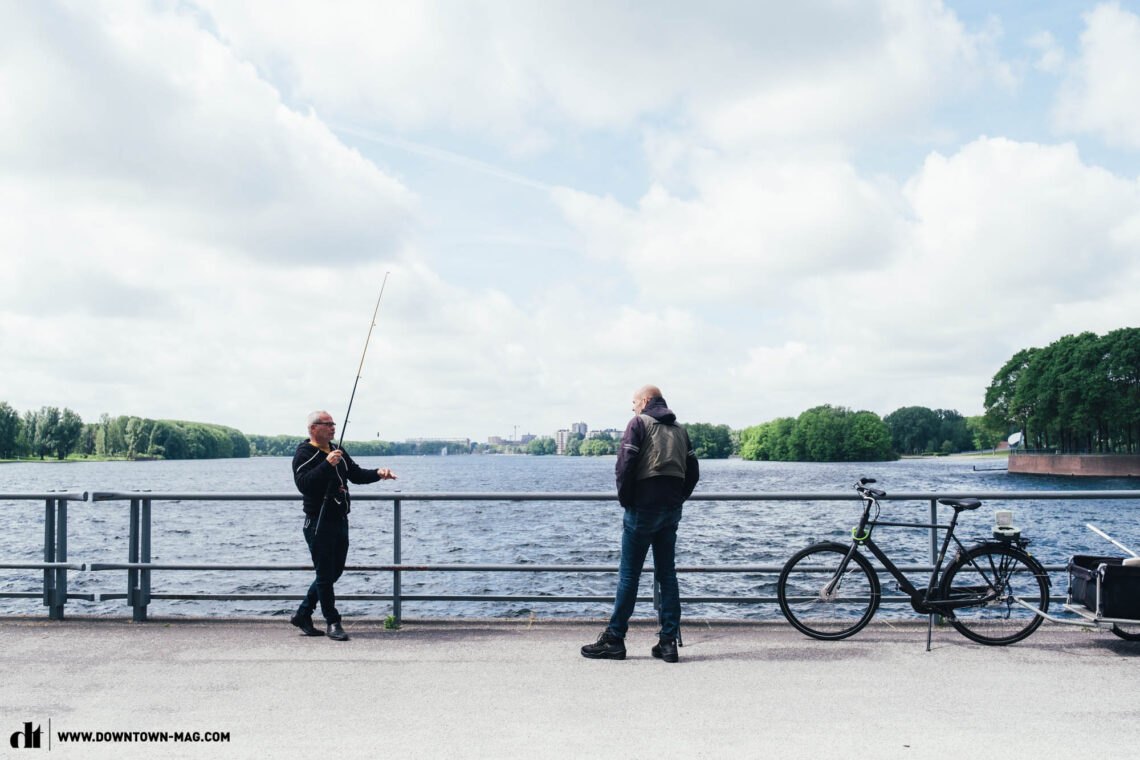
Swept up by the excitement of riding the WINORA, William realizes he’s missed a meeting. We make a brief stop at the New Metropolis Nieuw-West gallery to see his current exhibition before we swap bikes and he dashes off – or at least tries to on his analogue bike: ‘Damn, it feels like I’ve got a flat!’
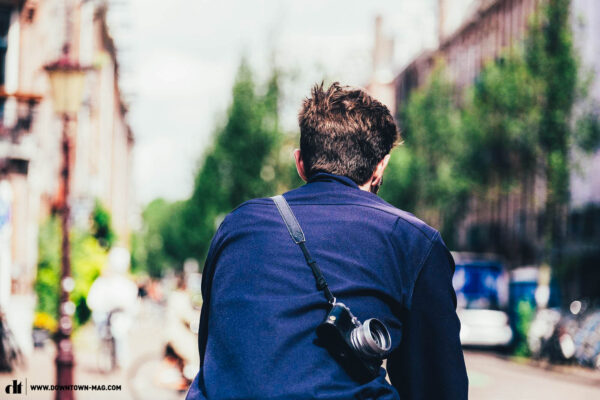
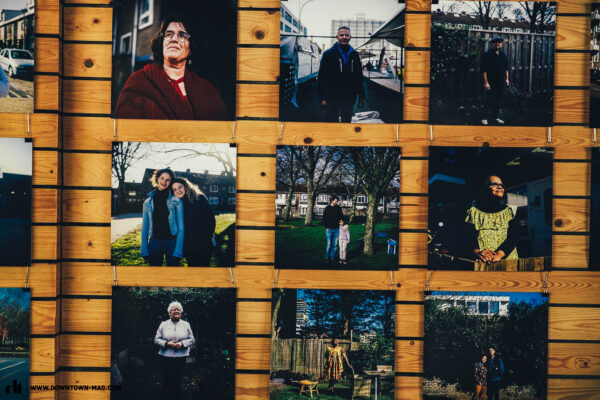
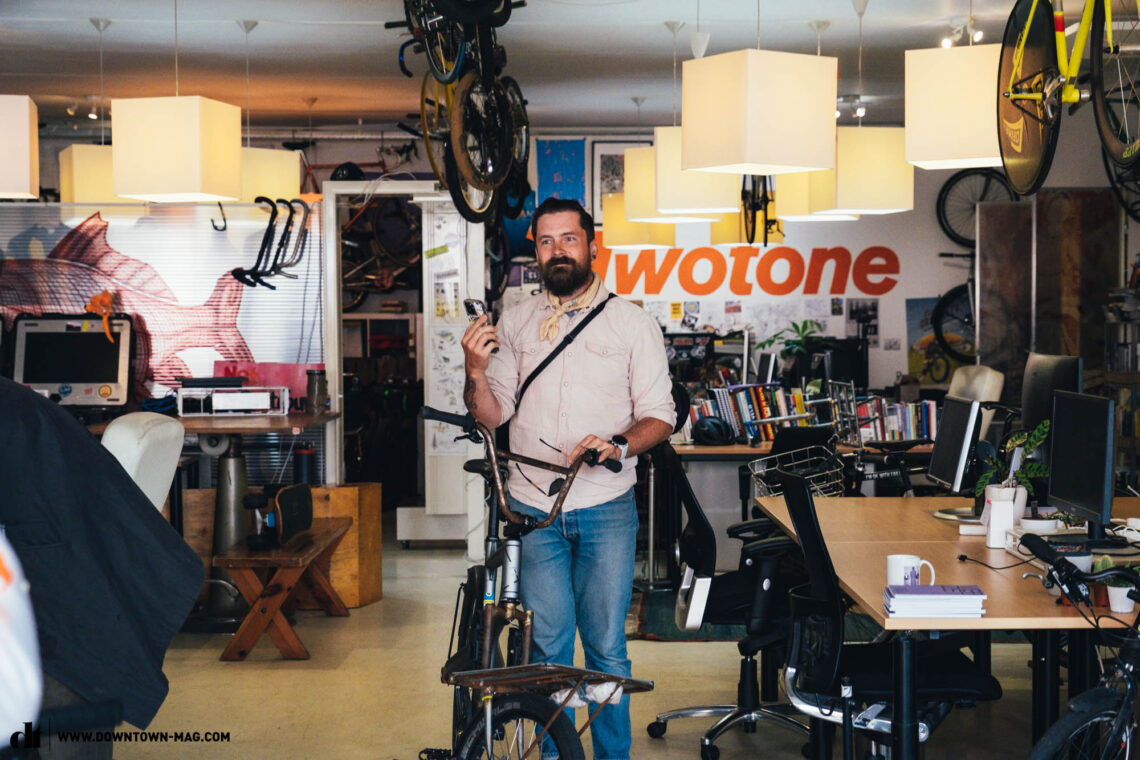

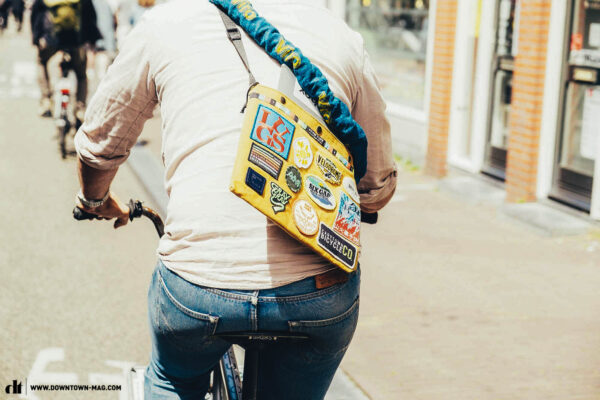
We’ve known Jon Woodroff longer than it takes the traffic light to change green, so we make it a mission to drop by his agency, Twotone Amsterdam, which works with start-ups in the bike industry. Part-agency office, part- shared workshop, it’s a buzz of activity. He’s actually on his way out on his cool custom bike that shows a lot of love for details in his signature style. He rides no-handed while facetiming his daughter, navigating towards the Echobox radio station studio, where he has a weekly show with friend and colleague Kike Molares, discussing what’s going on in Amsterdam’s bike scene. There’s a bit of music too. We position ourselves out of the way of the mic and listen in.

Bing van der Lande is objectively cool. As we wait for a set of traffic lights to change, the then-stranger throws us a grin, darting past us with the words ‘red is optional’. We push on the pedals in hot pursuit and fall into conversation. He tells us that he’s headed to his company, Object Embassy. It’s a name we’re unfamiliar with, but we’re curious, so decide to tag along.
His office is in a chic, well-to-do neighbourhood, furnished with stylish chairs – lots of them. It turns out that Bing has a design company, dealing in mainly re-editions of iconic 1950s chairs by Pierre Jeanneret that are handmade in teak and rattan and minutely checked for quality and detail. Bing had been frustrated with the state of the design industry and founded the company as a means to democratize it. It’s a small team still – just seven of them in total – and they design and produce a limited number of objects that they sell directly to consumers.

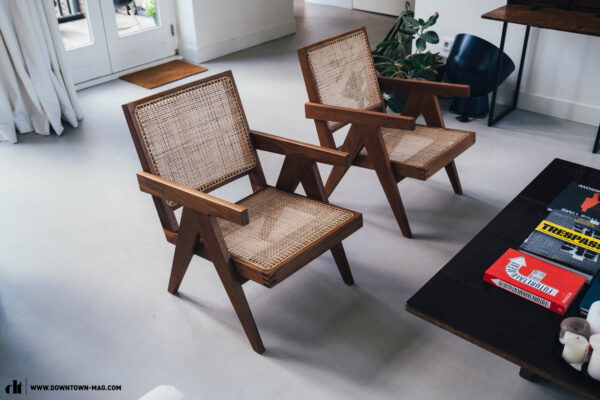
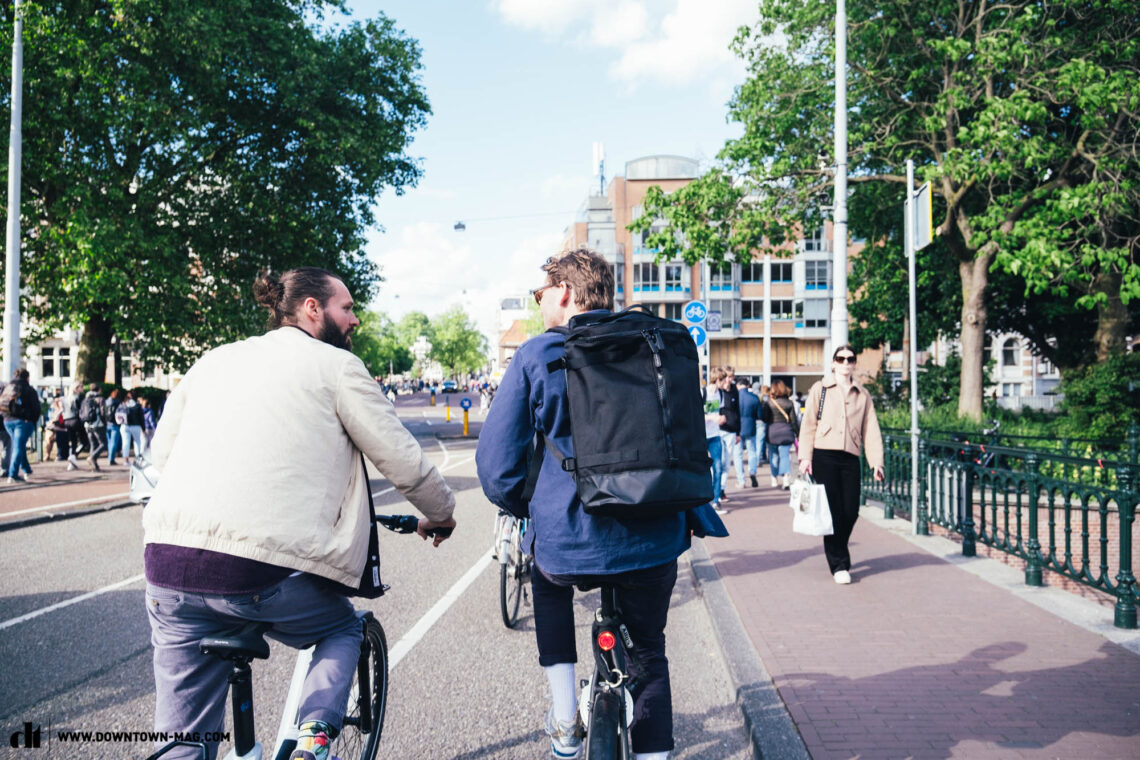
We’re still stunned by its location, so we ask how the young company affords office space on Willemsparkweg. He grins: ‘I can’t, we’re legal squatters basically, paying € 400 per month. We can get away with doing this on the cheap until the landlords find a new tenant – this is the norm in Amsterdam.’ Still grinning, he pops open a bottle of wine and dusts a houseplant: ‘We still keep our feet on the ground.’


He invites us for a Heineken later that same day at his apartment in Amsterdam Ost, which is part of a former kindergarten first built in 1914. A few years back, he and several other residents had clubbed together to buy the building, slowly turning it into a sustainable set of homes. His home decor reflects his lifestyle – hip and effortless – with a mix of second-hand steals and design shop finds. It’s meticulously designed without once seeming try-hard.
You’d be hard pressed to find a more creative, vibrant city than Amsterdam. It’s one of those places where almost everyone has a project on the go. Aesthetically, there’s a great mix of old and new, and the people on the ground are open-minded and innovative. Amsterdam is a place of opportunity, where you can get away with doing things your own way. People come here to feed off the inspiration – and we hope you’re doing the same right now.
5/6 Getaway Essentials – Hotels, Bars, Restaurants, Dos and Don’ts in Amsterdam
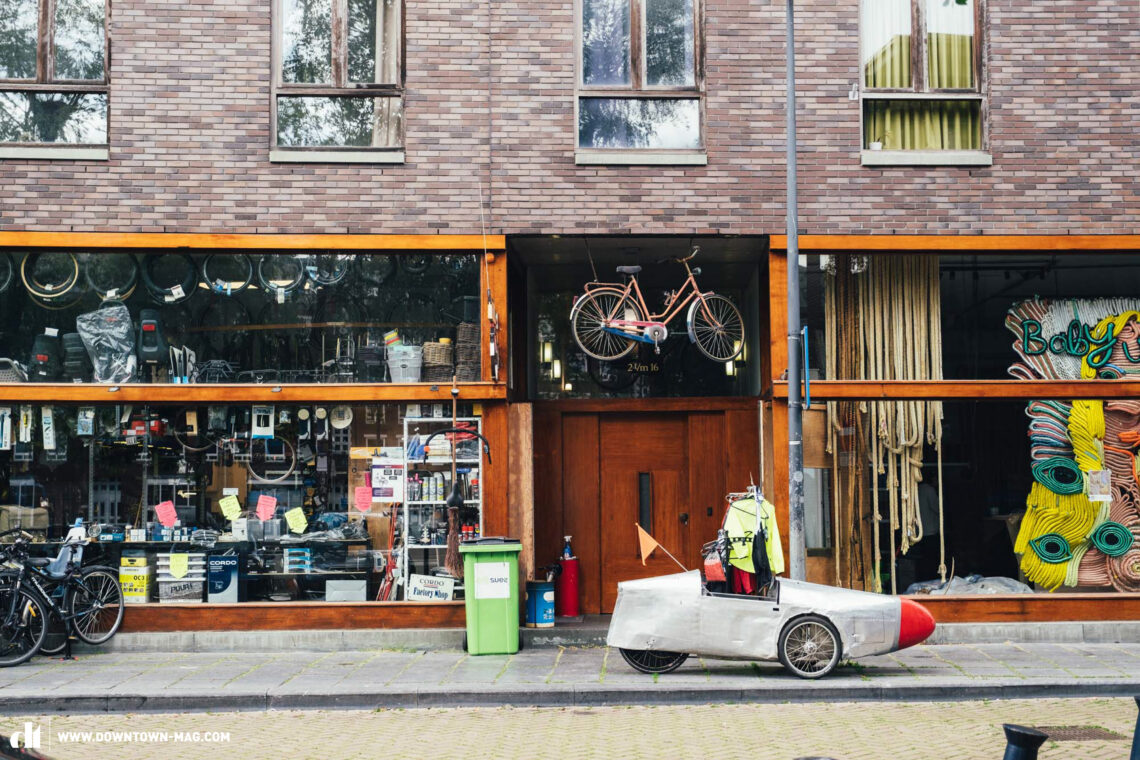
Bike-Shops
Amsterdamse Fietswinkel
Where? Postjesweg 106 bg | 1057 EG Amsterdam
Web amsterdamsefietswinkel.nl
WheelGood
Where? Oudezijds Armsteeg 22 | 1012 GP Amsterdam
Web wheelgood.nl
Amsterdam bike store
Where? Bilderdijkstraat 130HS | 1053 LA Amsterdam
Web amsterdambikestore.webshopgemak.nl
Bike Company Holland
Where? Jan van Galenstraat 404 | 1061 AZ Amsterdam
Web bikecompanyholland.nl
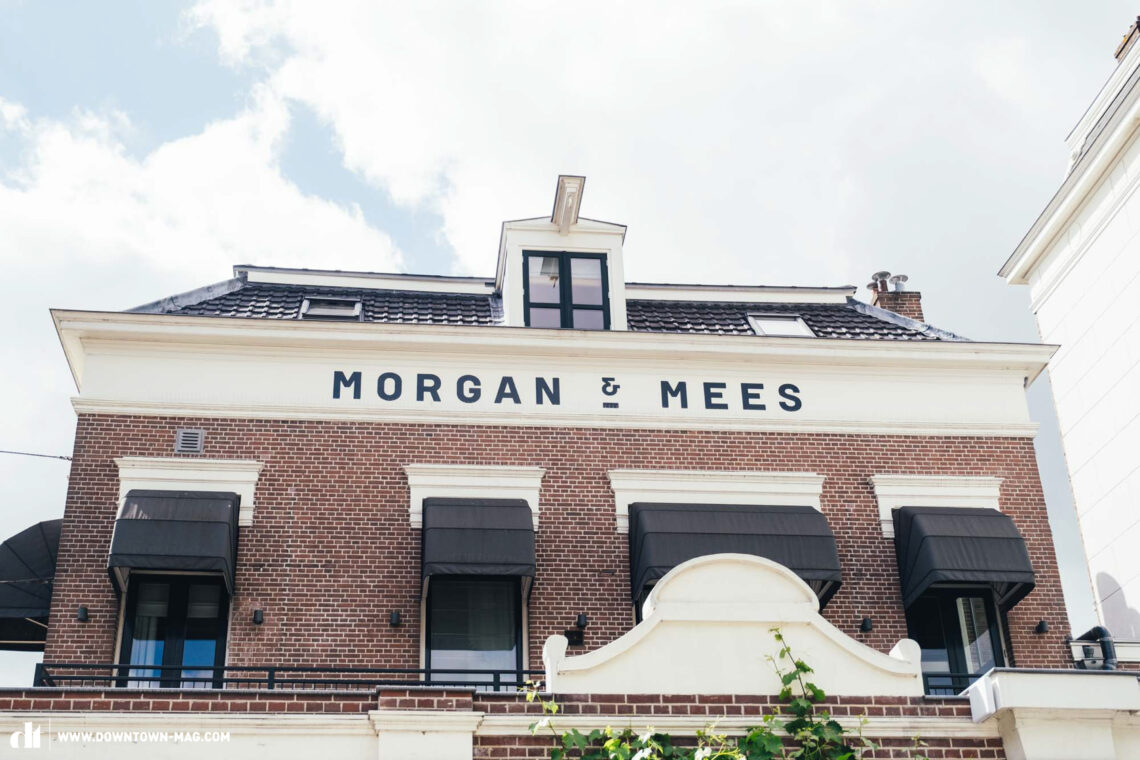
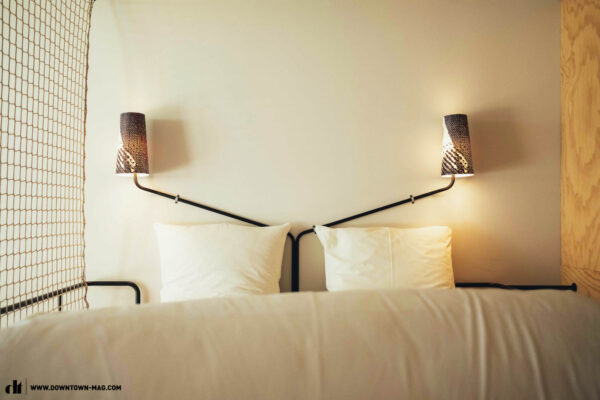

Where’s best to sleep in Amsterdam?
Full disclosure: we checked out two specific hotels in Amsterdam, but we only adored one of them. The other hotels in this list were recommended by friends and locals. Book ahead when it comes to the Dutch capital – this will get you better prices, more choice, and you might even come across a cool houseboat on Airbnb.
Volkshotel (young, hip, laidback)
Where? Wibautstraat 150 | 1091 GR Amsterdam
Web volkshotel.nl
Conscious Hotel Westerpark (basic, budget-friendly, laidback)
Where? Haarlemmerweg 10 | Westerpark, 1014 BE Amsterdam
Web conscioushotels.com
Hotel BOAT & CO (cool, modern, great views)
Where? 500 Revaleiland | Westerpark, 1014 ZG Amsterdam
Web boatandco.nl
Morgan & Mees (Parisian chic inspired)
Where? Tweede Hugo de Grootstraat 2–6 | 1052 LC Amsterdam
Web morganandmees.com
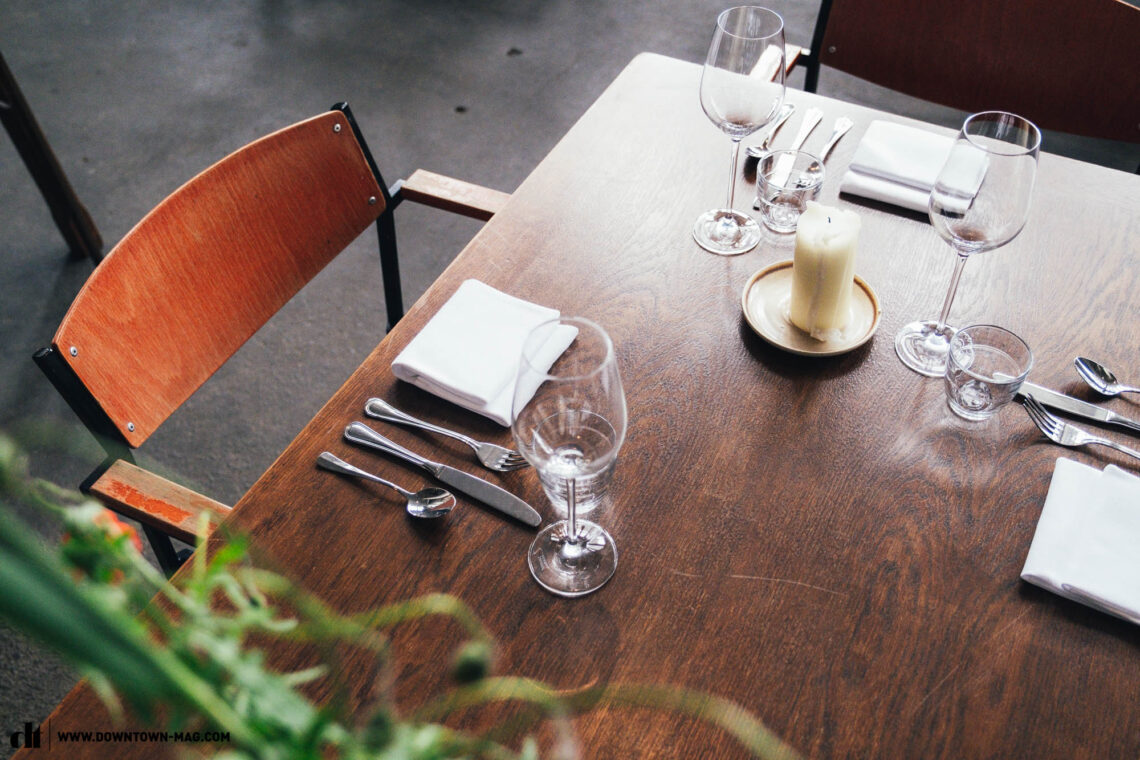
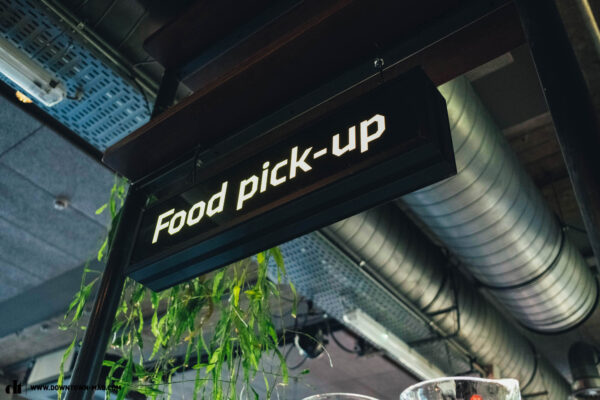



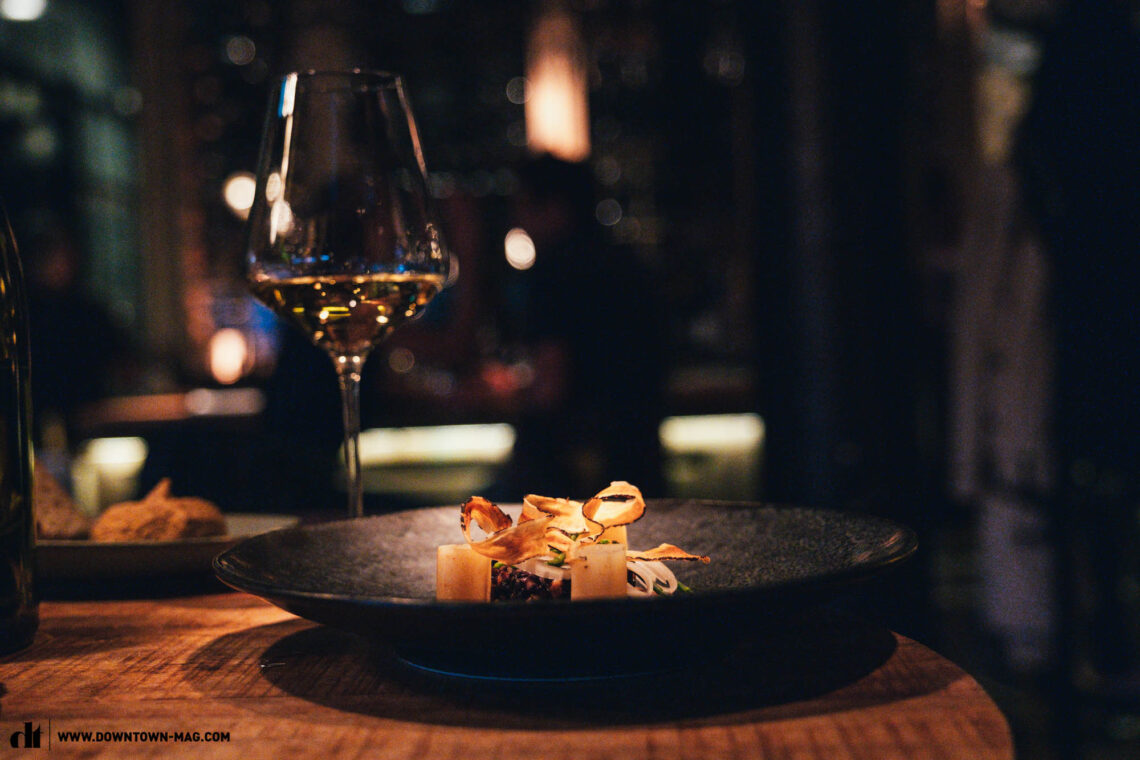
Where we’d happily eat again
Restaurant Bois
An epic, very new restaurant set up by five friends inside an old munitions factory: fully vegetarian, 8 courses, so many flavours, and a nicely smoked touch as it’s all from wood-burned appliances (no gas or electric in sight). The right wine? Yes, please. Eat by candlelight, enjoy the cool music and people-watch amongst the locals; it’s a gathering vessel for those who are feeling bold. Our culinary highlight of the trip.
Where? Warmperserij 3 | 1505 RL Zaandam (By ferry across the IJ)
Instagram restaurant_bois
Clos Amsterdam
A wine bar with first-rate food and wine. The asparagus with hollandaise sauce was delicious. Thanks to the manager who eventually let us take some photos inside.
Where? Beukenplein 50 | 1091 ML Amsterdam
Instagram closamsterdam
Café Parlotte
Recommended by our friend Bing. A laidback restaurant serving oysters and international dishes. Ready yourself for the long wine list.
Where? Westerstraat 182 | 1015 MR Amsterdam
Instagram cafe_parlotte
Restaurant de Kas
From the plant to your plate – this restaurant relies on its own greenhouse and allotment where it’s growing more than 300 herbs, vegetables and fruit sorts. Granted a MICHELIN Green Star, don’t turn up expecting to get a last-minute table.
Tip: Book early and request a spot on the terrace.
Where? Kamerlingh Onneslaan 3 | 1097 DE Amsterdam
Instagram restaurantdekas
Restaurant Wilde Zwijnen
Set up back in 2010 before Amsterdam’s foodie scene really became a thing, Wilde Zwijnen set the tone for contemporary Dutch cuisine. The selection is limited with just a chef’s menu of 3–5 courses featuring fish, meat or a vegetarian option. Open seven days a week in a former bakery, with lunch served on weekends. Advanced reservations necessary.
Where? Javaplein 23 | 1095 CJ Amsterdam
Instagram wildezwijnenrestaurant

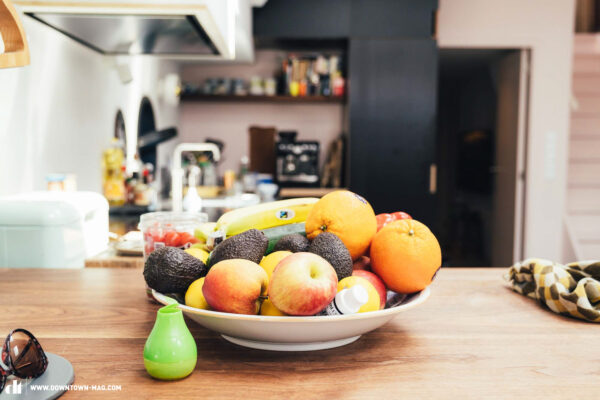
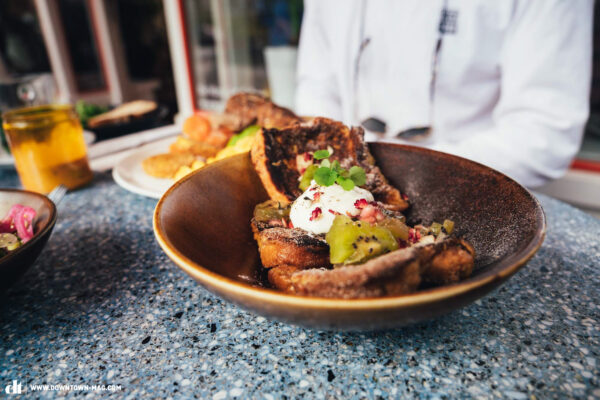


Brunch, etc.
This café is great:
Friedhats FUKU Cafe
Where? Bos en Lommerweg 136 HS | 1055 ED Amsterdam
Instagram friedhats
Then go next door for brunch:
Samen – Lunch and Juices
Where? Bos en Lommerweg 72 | 1055 EC Amsterdam
Instagram samenlunchenjuice
Mr. Stacks
Hungry for the tastiest vegan pancakes in existence?
Where? Govert Flinckstraat 122 | 1072 EM Amsterdam
Instagram mrstacksams
For a co-working space, virtual meeting-suitable spot or just a good cappuccino, this is your place.
Volkshotel
Where? Wibautstraat 150 | 1091 GR Amsterdam
Instagram volkshotel
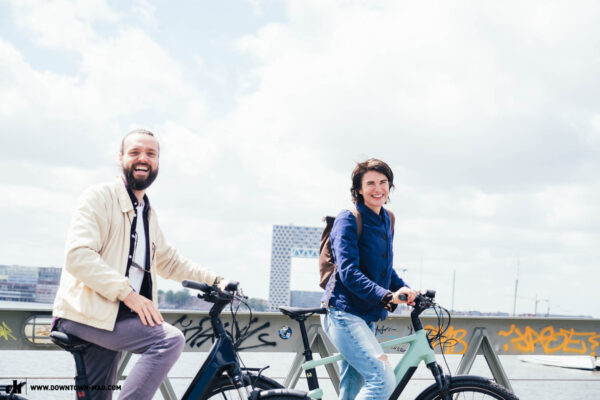
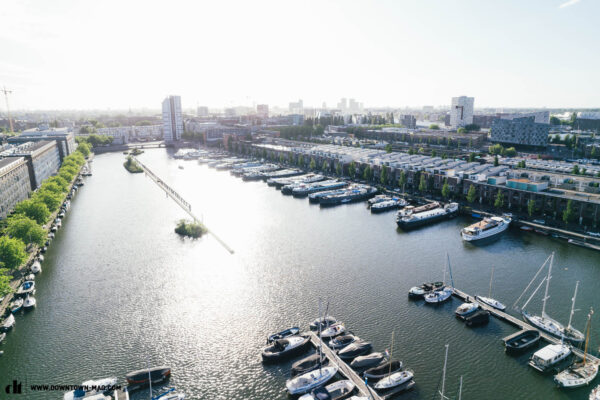
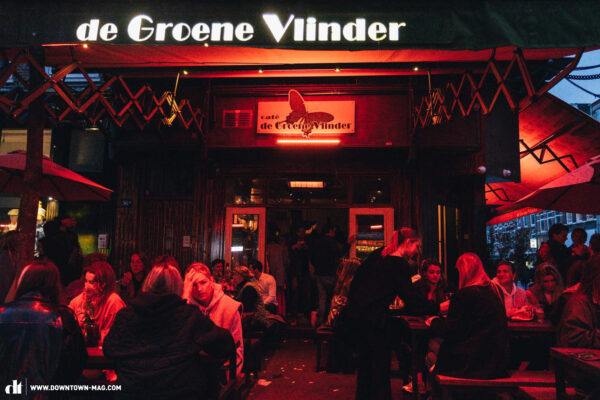
Dos
- Get up early and see the city without the frenzy.
- People clearly got places, so stay tucked into the side on the bike path.
- Pack a rain jacket.
- Use mudguards.
- Do a boat trip on the canals.
- Take the ferry north.
- Buy a museum ticket in advance.
- Make dinner reservations!
- Convince your boss to let you find a co-working space in A’dam.
- Lock up your bike.
- Try houseboat living.
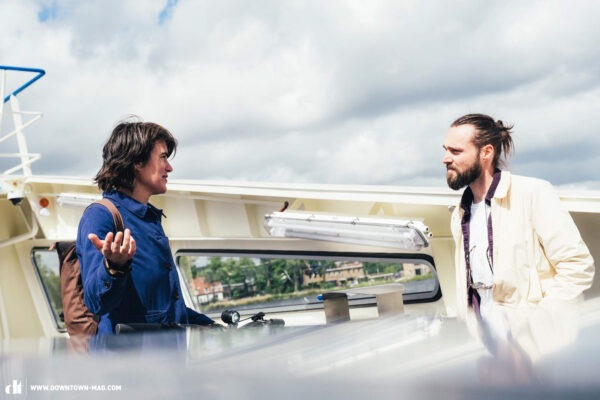
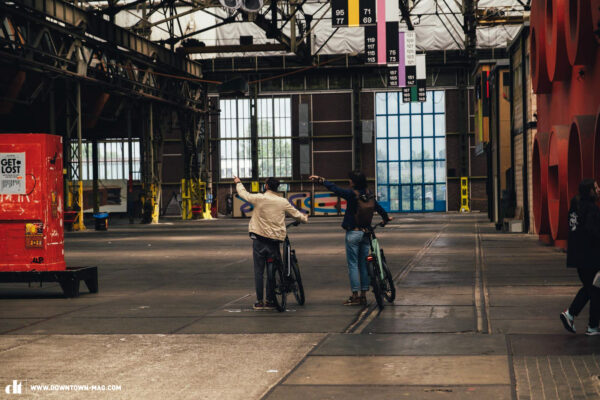
Don’ts:
- A coffee shop is not the same as a cafe.
- Take photos in the red-light district.
- Restrict yourself to the centre.
- Underestimate any herbs and roam the streets like a zombie.
- Expect a last-minute airplane ticket, hotel room or dinner table.
- Run on the bike paths.
- Buy drugs on the street.
- Ride on the wrong side of the road.
- Do a Michael Phelps in the Amstel and accidentally cut open your foot.
- Fall in a canal.
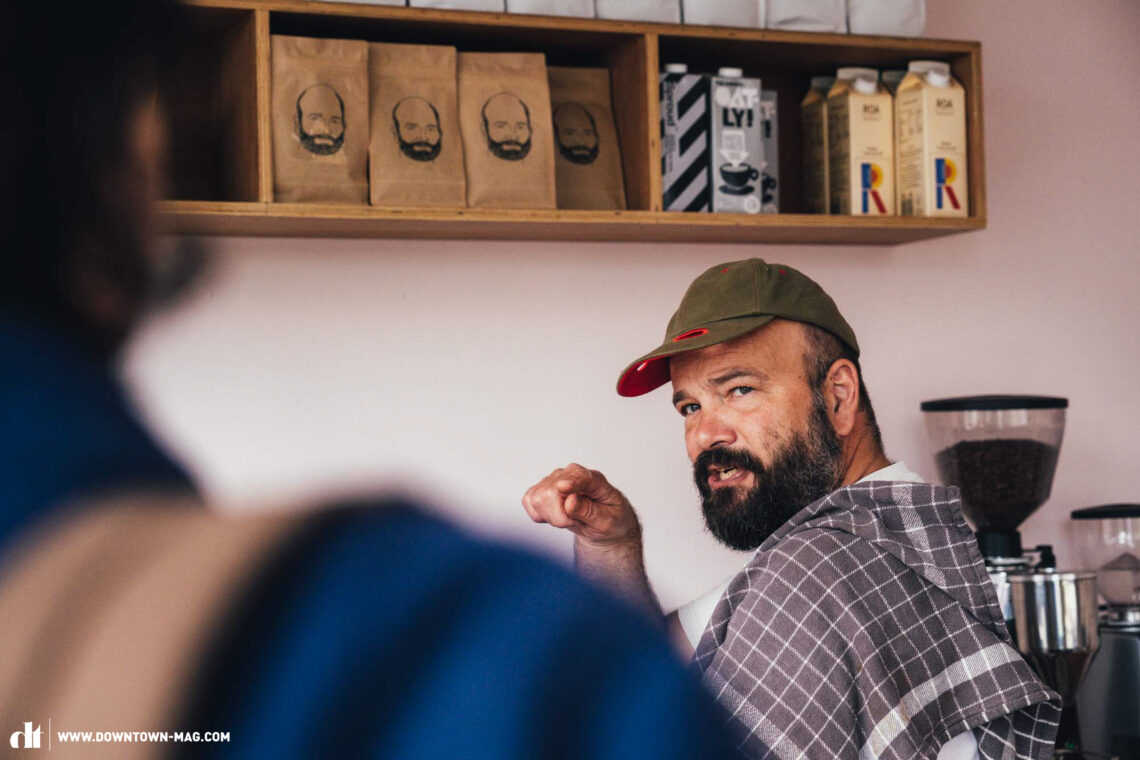
Dutch for beginners
While Dutch will be fairly recognisable if you’ve done any German in high school, it has some quirks in its pronunciation that throw a spanner in the works somewhat. The ‘g’ is where foreigners often stumble most audibly – it is pronounced something like a German [ch], as in Bach, or a Scottish sounding ‘loch’ and ‘ach’.
- Hello – Hai!
- Good day – Goedendag.
- Good morning – Goedemorgen. (khoo-der-mor-khern)
- Good evening – Goedenavond. (khoo-der-aa-font)
- Good night – Goede nacht.
- How are you? – Hoe gaat het met u?
- Good, thanks – Goed, dank u.
- Please/Here you go – Alstublieft. (als-stuw-bleeft)
- Thank you – Dank u well.
- Yes. – Ja.
- No. – Nee.
- Excuse me – Sorry.
- See you later – Tot ziens. (toat seens)
- See you! – Doei!
- Help! – Help!
- Watch out! – Let op!
- Bike – Fiets.
- Bike workshop – Fietsenmaker.
- Left – Links.
- Right – Rechts.
- Straight on – Rechtdoor.
- Where is…? – Waar is…?
- How much does it cost – Hoeveel kost dit? (hoo-feyl kost dit)
- (Want a) beer? – Biertje?
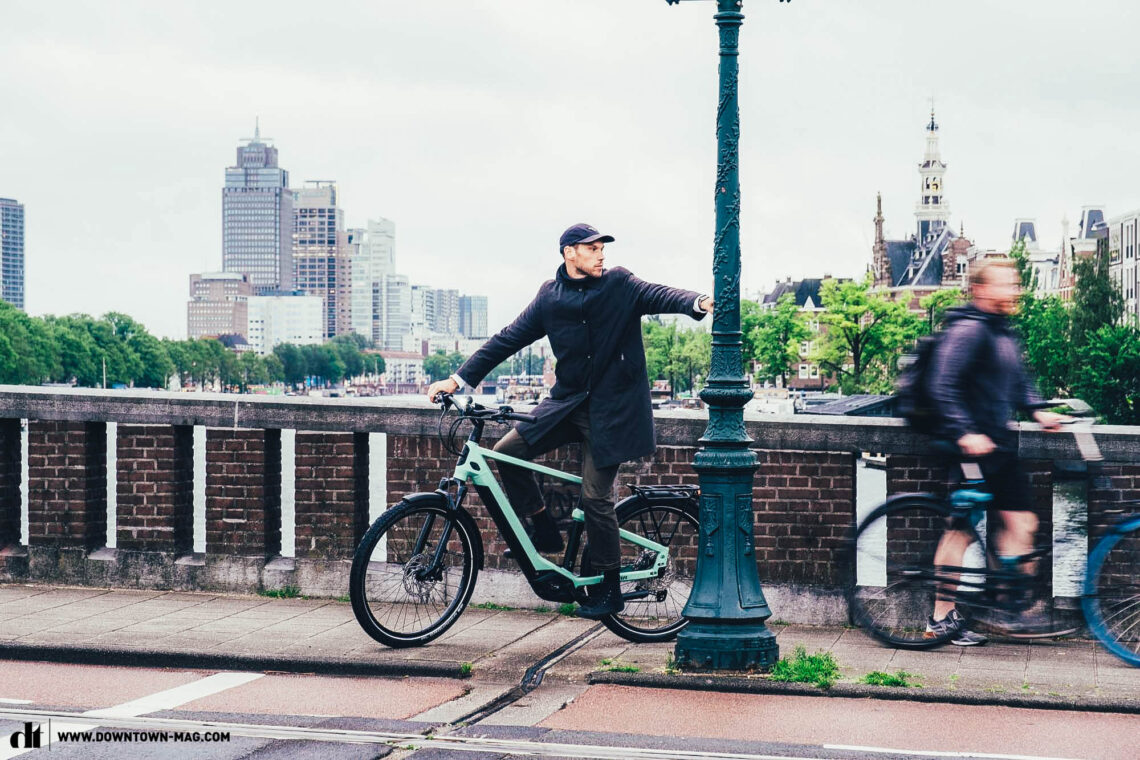
6/6 Escape faster Our Amsterdam-approved electric urban whips in detail
We appreciate how cool Amsterdam’s centre is, but we can’t stress enough how important it is to go, well, anywhere outside of the city too. Explore up-and-coming districts, quieter canals, the coast and more. The WINORA Yakun ebike is the best tool for exploring the region – yes, even better than a water taxi. Read on to discover more about the Yakun.
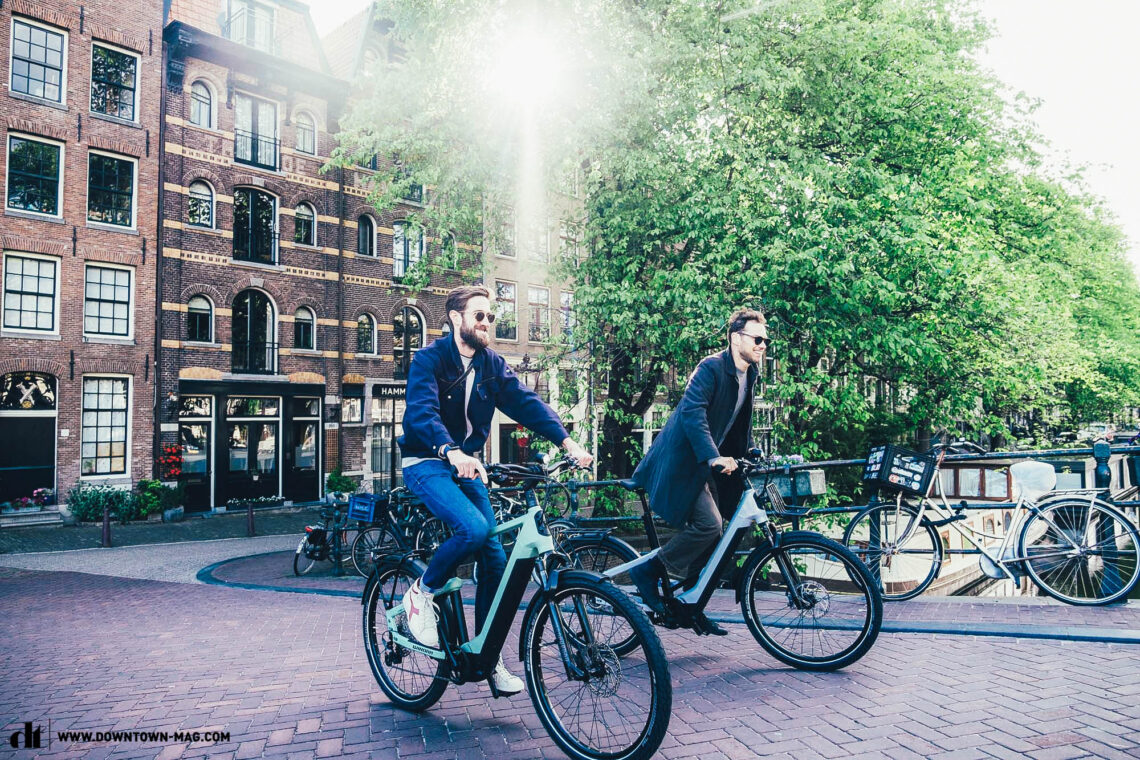
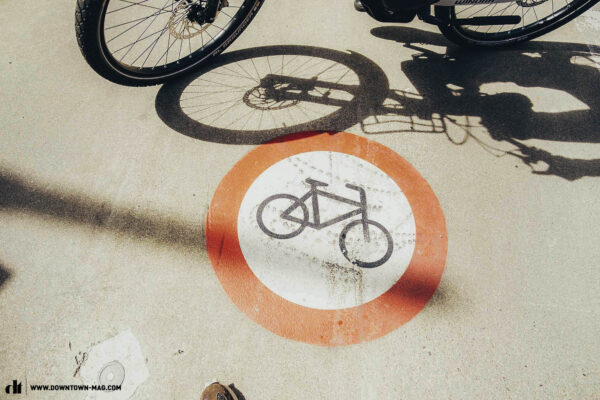
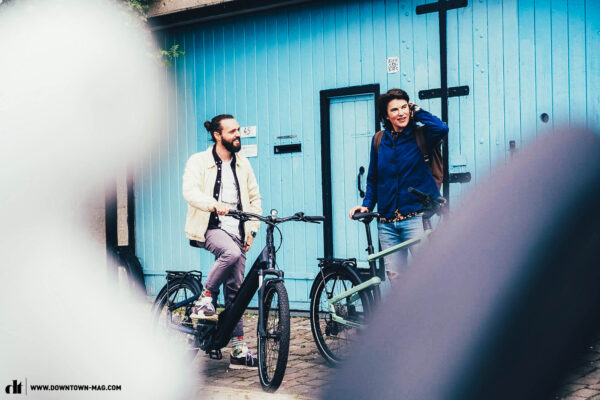
WINORA Yakun 10
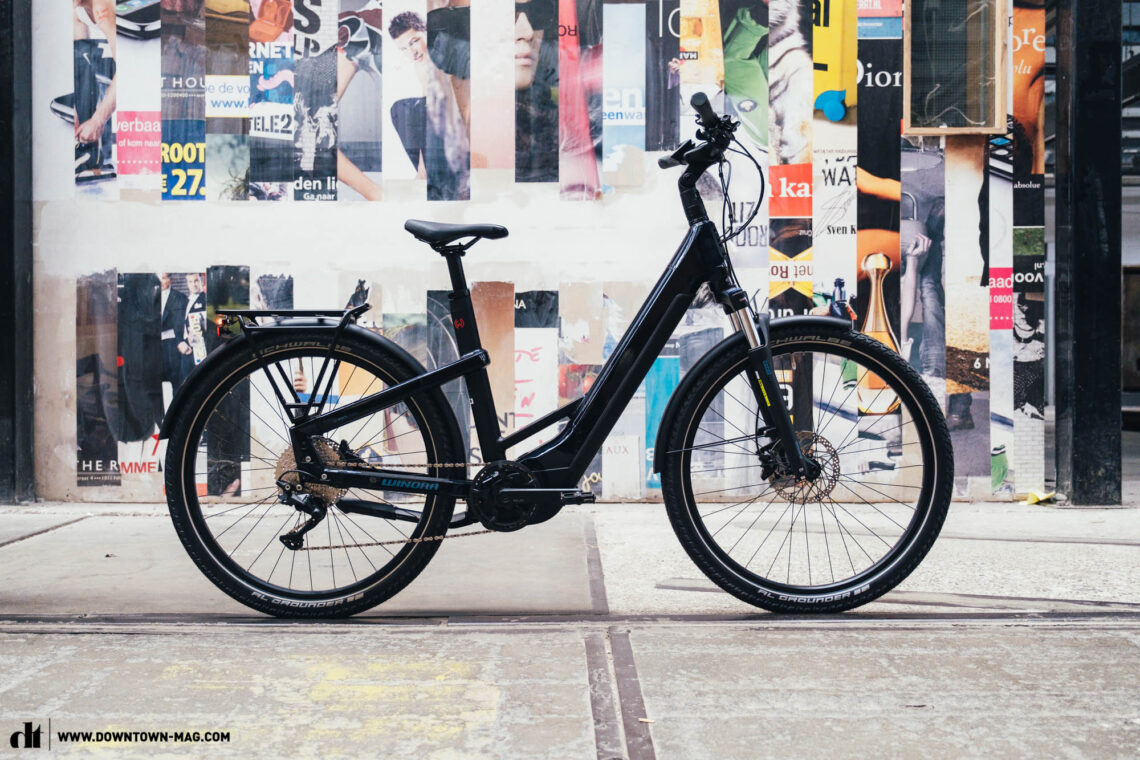
28,60 kg in size M | 3.999 € | Manufacturer’s website
The Yakun 10 represents WINORA’s entry-level trekking/hybrid bike. It’s a low-step through, super comfy ebike that’s ideal for all-day sightseeing around Amsterdam. Powered by a powerful Bosch Smart System motor, you can ride further (and faster, pedestrians permitting) around the flat city than you would otherwise. The motor has 85 Nm torque, so any usually strength-sapping climbs would be easy if they existed – as it stands, it’s as flat as a pancake, so just be confident that you’ll get away efficiently at traffic lights even in a heavy gear. In a hurry for a meeting? Whizz by the line of shoulder-rocking-and-rolling sit-up-and-beg riders in Turbo mode. While the 750 Wh battery has a huge range, we can’t say for certain that you can cover all 200 canals without a charge. Thanks to the functional Modular Rail System, accessories like a bottle cage or bike lock can be easily mounted onto your down tube. If you’re carting a heavy load across town, the rear rack can hold up to 27 kg and it’s compatible with the MIK click system, allowing you to attach and remove a saddle pack on the rack in a matter of seconds.

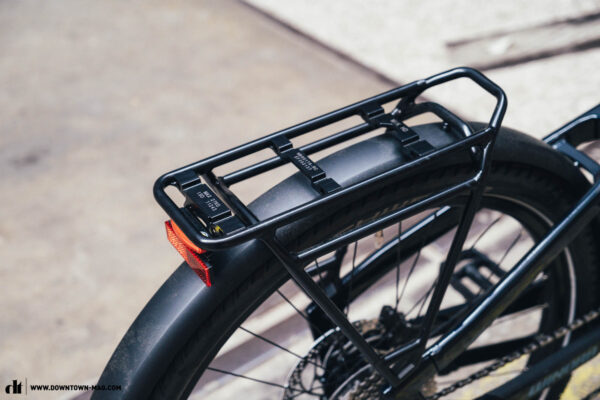
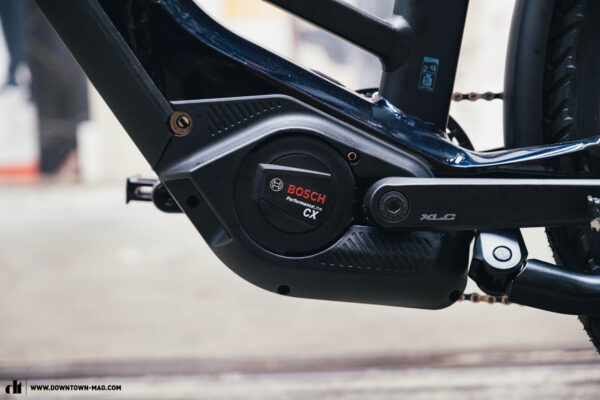
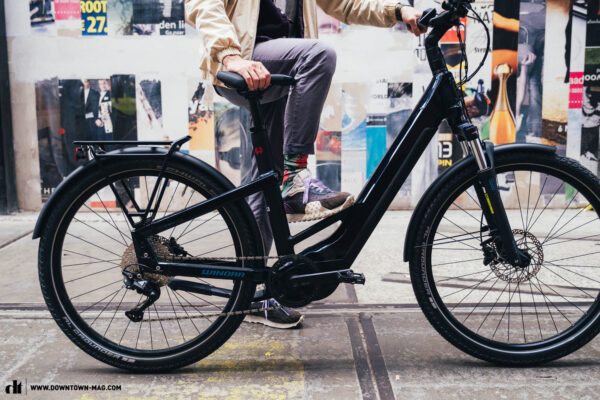
WINORA Yakun 12

28,75 kg in size L | € 4.299 | Manufacturer’s website
WINORA offer all of their Yakun lineup as both a step-through or with a classic diamond frame. Given the deconstructed design around the top tube and stays, the WINORA Yakun 12 would be worthy a spot in any self-respecting modern art gallery in Amsterdam. We definitely caught people’s eyes as we cruised around town – these Yakuns are something else compared to the usual budget ebike or rusty townbike. The Yakun 12 is specced with hardwearing aluminium mudguards, lights, a kickstand, and frame-integrated rack. There’s even a dropper seat post (of sorts) with 150 mm of adjustment, which makes it not only really easy to get on and off but a big bonus for bike sharing. Add in the angle adjustability of the stem on the Yakun 12, and you’ve got the ideal co-bike. With the wide 2.4″ Schwalbe Al Grounder tires, you’ve got cushiness even before you think about the suspension fork. It rides smoothly over bumps in the road and even Amsterdam’s tramlines won’t ruffle its feathers. If you are bumping up and down curbs, go for it: the 80 mm of suspension from the RockShox Recon fork will lap it up.
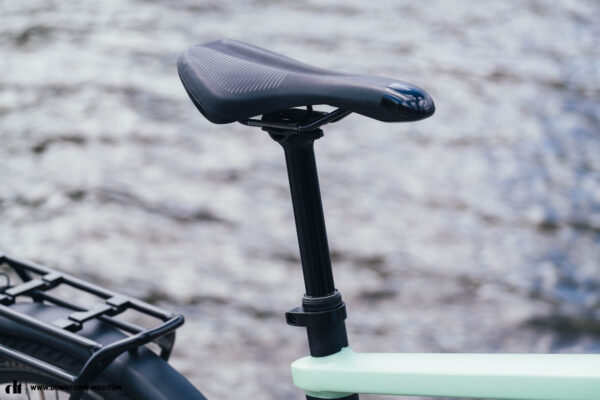
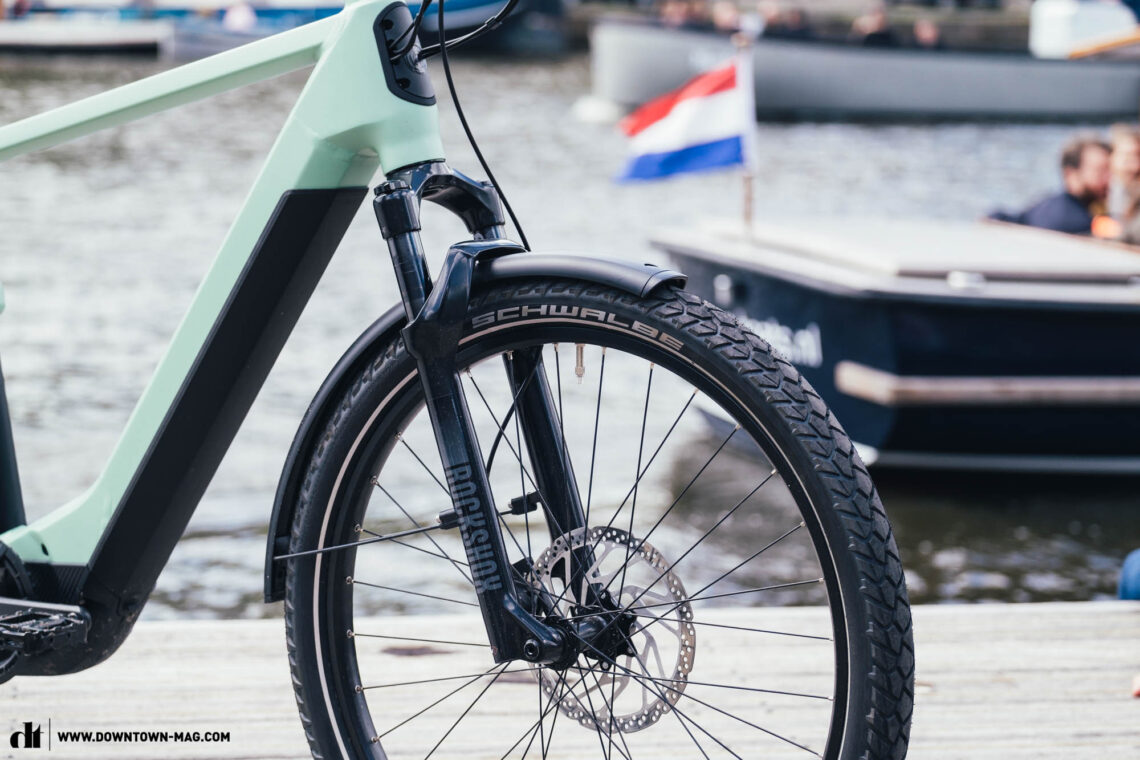

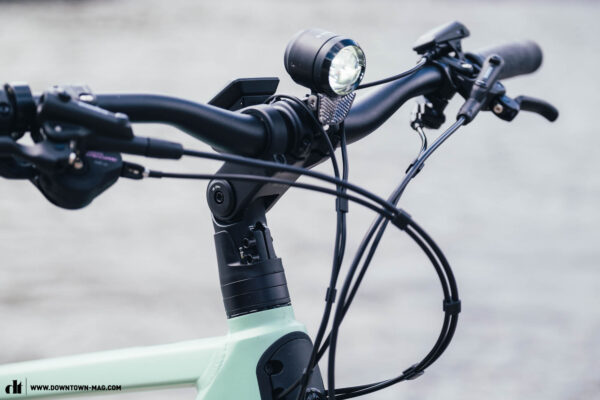
Winora Yakun R5 Pro
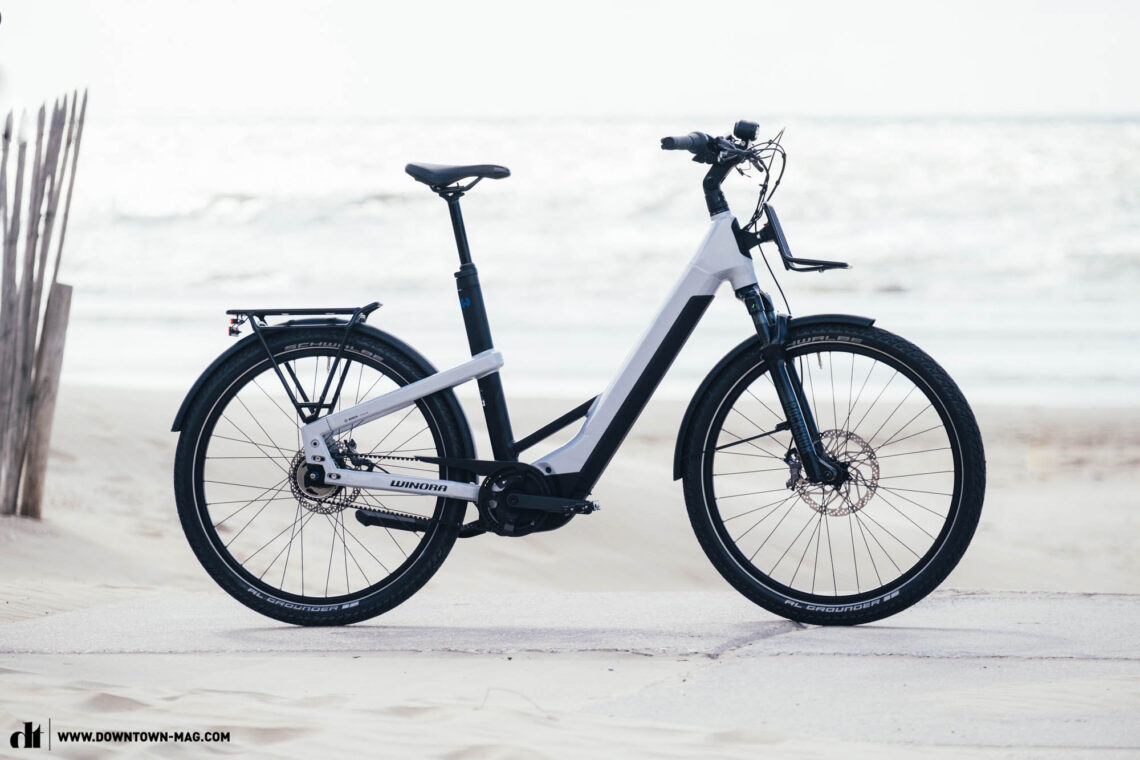
29,55 kg in size L | € 4.699 | Manufacturer’s website
The Yakun R5 Pro that we rode around the Dutch capital is WINORA’s top-of-the-line Yakun model. Instead of a standard chain, you’ve got the low-maintenance GATES CARBON BELT DRIVE taking care of power transmission. According to the manufacturer, it doesn’t require lube and won’t rust – even a daily lashing of the salty sea breeze that comes in from the North Sea shouldn’t affect it. The RockShox Recon fork has 80 mm of travel for all-road comfort. That means it shouldn’t be an issue to ride comfortably over bumpy town centres with awkward cobbles if you end up exploring anywhere else than Amsterdam’s well-developed bike path network. Taking cues from MTBing, the Yakun R5 Pro has powerful Shimano XT four-piston brakes that are intuitive and easy to modulate, which takes the stress away from riding in a busy town. Up front, the Litemove AE-130 has a high and low beam so you’ll be well visible – even if the rest of the world is distracted by the red-light district. This Yakun model comes as standard with an easily-removable front rack that’s permitted to carry up to 3 kg (that’s a lot of tulips).
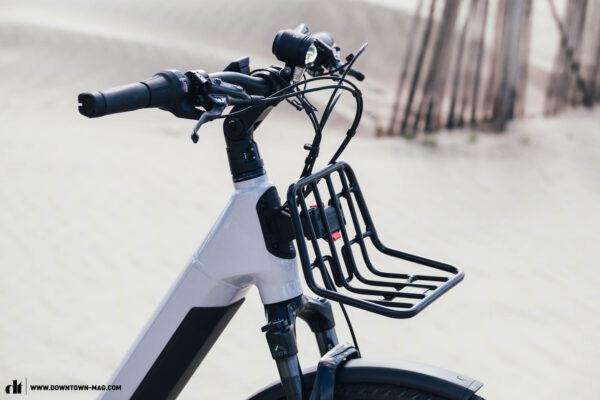
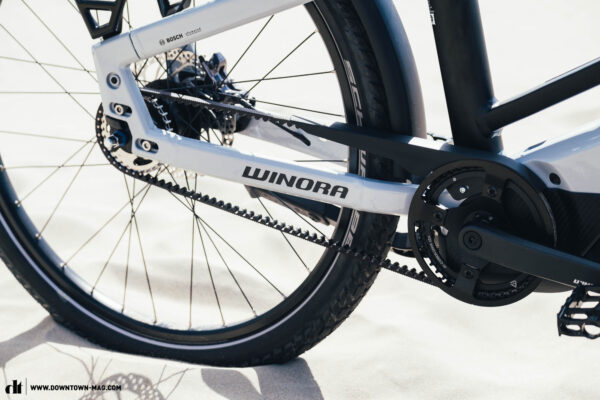
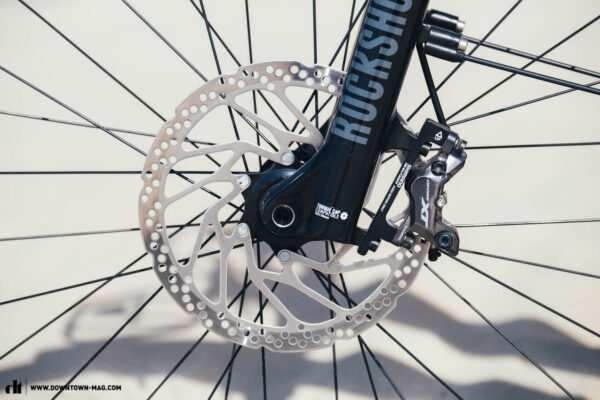
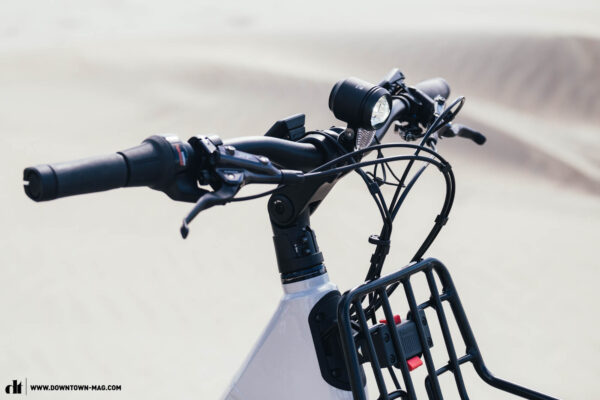
Words: Julian Lemme Photos: Julian Lemme / Robin Schmitt




